








The Illawarra real estate market remains fluid as 2024 wraps up. Investor-friendly properties like two-bedroom units are plentiful, while high construction costs make homes needing renovations more challenging. However, turnkey homes are in high demand. After a market low in August 2023, consumer confidence is rising as interest rates stabilize, with possible reductions ahead. Banks are also lowering rates to gain market share, and with over 700,000 new migrants to Australia this year, housing demand is strong. Sydneysiders continue relocating to Illawarra, supported by our McGrath network of 30 Sydney offices. Locally, McGrath Illawarra is expanding—our Wollongong and Thirroul teams are growing, and a new office in Dapto is nearly ready, with Shell Cove set for 2025.
Here’s to an exciting year ahead!
Yours Sincerley
Christian Zeidler 0411 072 073 christianz@mcgrath.com.au
by Christian Zeidler


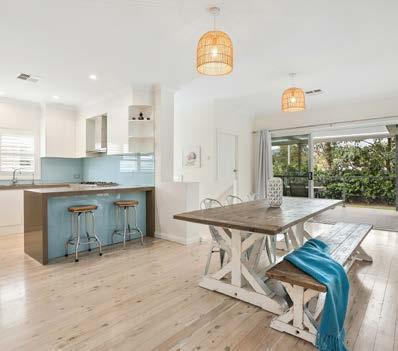
Wongawilli, Balgownie, Towradgi, Woonona, Bulli, Austinmer, Clifton, Helensburgh, Kemblawarra, Port Kembla, Cringila, Keiraville, West Wollongong, Mayfield, Dombarton, Kembla Grange, Cordeaux Heights, Farmborough Heights, Fairy Meadow, Figtree, Bellambi, Russell Vale,


5/17

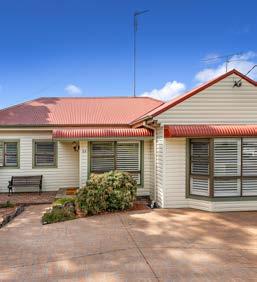



Mount Pleasant, Tarrawanna, Scarborough, Thirroul, Wombarra, Stanwell Tops, Lake Heights, Warrawong, Coniston, Mount Keira, Mount Kembla, Unanderra, Fernhill, Mount Ousley, Corrimal, East Corrimal, Coledale, Stanwell Park, Berkeley, Gwynneville, Mangerton, North Wollongong, Wollongong, Mt St Thomas
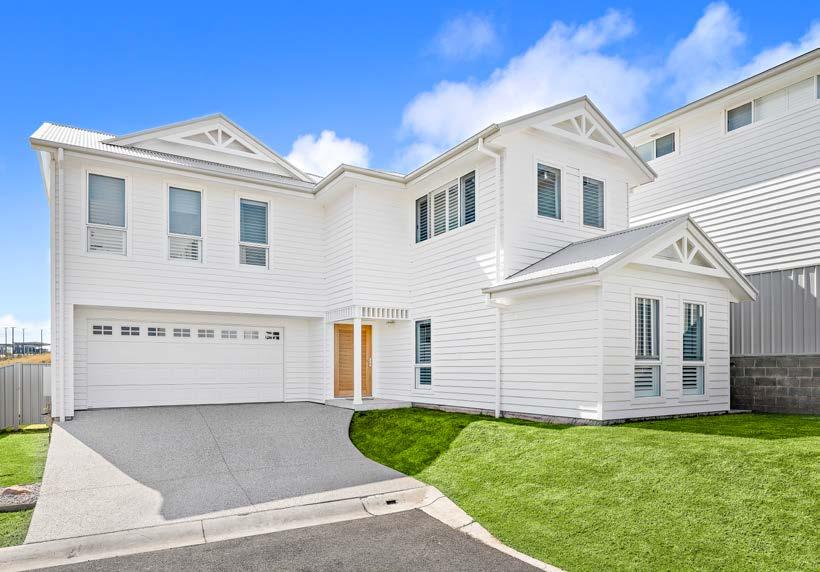
10


51
Page 4
A message from John McGrath
Page 6
Trend 01
The Calm Home: Serene, Smart & Safe
Page 12
Trend 02
Allure Of The Coastal Azure
Page 18
Trend 03
Our Changing Cities: Housing Redefined
Page 24
Trend 04
Baby Boomers Making Their Move

Page 30
Sydney & Surrounds
Page 38
Melbourne & Surrounds
Page 44
Brisbane & Surrounds
Page 50
Hobart & Surrounds
Page 58 References
This is an important time for property in Australia, as many significant changes are afoot that will impact both buyers and sellers.
We are seeing direct action from various levels of government to address the many concerning issues contributing to a lack of housing supply, affordability and diversity to cater to our growing population and shifting demographics. Australians need more housing options in the areas where they want to live and work, also giving them the ability to choose different types of properties at different stages of life.
All of this will take time to unfold. Meanwhile, higher interest rates are straining some parts of the market, while stronger activity among Baby Boomers is also having an impact on property values. The lingering social effects of the pandemic continue to influence how and where we live in evolving ways.
Hence we believe we are approaching 'A New Era' in property.
The age of 2% to 3% mortgage rates is over, and many buyers are responding to tighter credit by moving to more affordable areas and/or buying smaller homes.
Meanwhile, one of our largest-ever population demographic has reached a stage of life when they're making some major decisions. The Baby Boomers hold half of Australia’s private wealth, so when a lot of them are buying and selling at the same time, it has the power to move markets.
We’re seeing this today.
Baby Boomers are retiring, downsizing, buying investments, and helping their kids buy their first homes. By 2025, every Boomer will have access to their superannuation, prompting many to make new choices. According to the Australian Bureau of Statistics, 710,000 Australians intend to retire between FY23 and FY28. Many will make a seachange, taking generous budgets to comparatively affordable coastal towns, with a steady price uplift inevitable in the most popular locations.
The allure of the coastal azure is one of the trends we explore this year. While beachside living is a common aspiration, it’s no longer just about lifestyle. It’s also about affordability for the many city millennials now working from home, who have the freedom to move to the coast.
Now let’s talk about home values.
It’s unusual to see strong price growth when interest rates are higher, but this is only happening in markets where demand outweighs supply. The stark outperformance of Perth, Brisbane and Adelaide is due to this and their relative affordability when compared to Sydney and Melbourne.
Their price growth has been so robust that Brisbane is now Australia’s second most valuable capital city – a feat not seen since 1997. In addition, Adelaide home values are now higher than Melbourne for the first time in at least 40 years, and Perth values are also higher for the first time since 2015.
This means that Melbourne, a large international city rated among the world’s best for lifestyle, is now Australia’s third most affordable city market. This won’t be the case for long, especially given Melbourne is projected to become Australia’s most populous capital city by 2032.
During my 40 years in real estate, I have witnessed the market adapt to change in many innovative ways. It wasn’t that long ago that the Bank of Mum and Dad and ‘rentvesting’ did not exist at scale, investors only bought locally, and families would have never contemplated apartment living.
In a world of geopolitical turmoil, Australia remains a safe haven and offers a stability that positions us well for the future.
John McGrath CEO & Founder
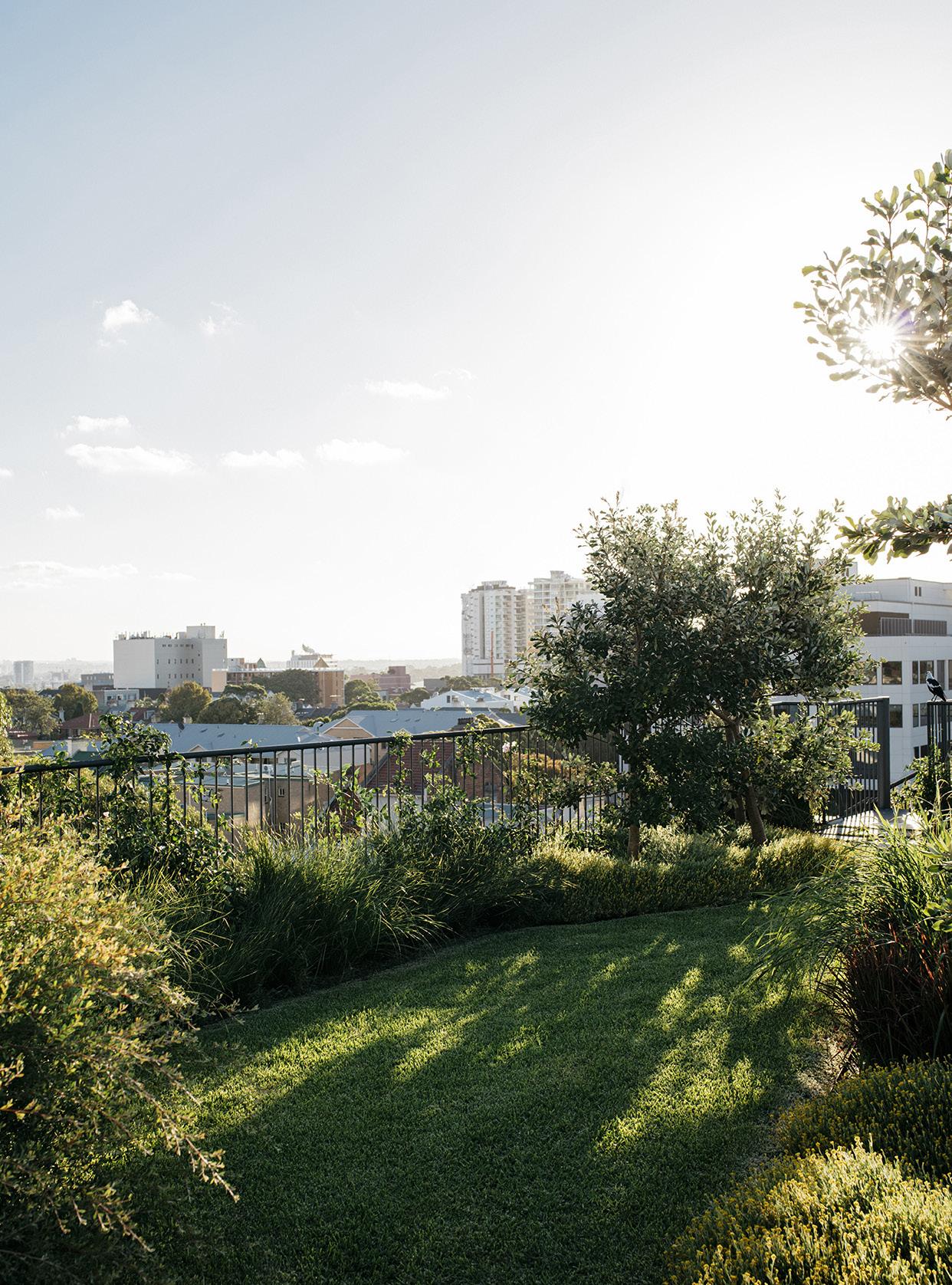
With an escalation in international geopolitical risks and conflict, and a cost-ofliving crisis at home, many people are taking steps to turn their home into a calming and sustainable sanctuary1 .
Amid this ongoing division and uncertainty, perhaps it was not surprising the soothing shade of ‘Peach Fuzz’ was chosen as the 2024 colour of the year by colour chart provider Pantone. The velvety gentle pastel mix of pink and orange was said to “capture the desire to nurture ourselves and others” 2 .
There’s been a revival of soft flooring with rugs and carpets being placed on floors, whilst also being exhibited artistically as wall hangings. Home decoration and layout approaches

are emphasising human connection and comfort, offering occupants a welcome break from the digital universe 3
The sanctuary trend is extending into other home design elements. Adam Haddow, Director of SJB architecture and design studio (pictured), said home design is increasingly trying to meet the health and wellbeing needs of our minds and bodies.
“Garden is the new luxury - it is less about how much house you have and more about how much garden you can enjoy,” Haddow said. “The opportunity is that of a garden that is beautifully landscaped and private, leading to outdoor baths and showers –complete bliss.
"Serenity is also working out how to live closer together, better. This is resulting in the death of the ‘open plan’, towards more defined rooms and spaces, so that you can find space to be quietly alone.”
“Serenity
is working out how to live closer together…this is resulting in the death of the open plan” - Adam Haddow
Adam
Haddow
Photography: Katie Kaars
Haddow said another trend, in line with the sanctuary theme, involves the rising use of natural and sustainably sourced materials which can be recycled at the end of their functional lives.
“Thankfully we’ve moved away from manufactured materials towards more natural ones,” Haddow said.
Haddow predicts an upsurge in rammed earth construction, which involves constructing walls by compressing raw materials such as gravel, silt, sand and clay into place between formwork. This building method, although labour intensive, typically has a low embodied energy. This means rammed earth construction produces less greenhouse gas emissions compared to other building methods 4 .

“Rammed earth is an amazing building product that has been around for a millennia – we’re now learning to use it in a contemporary setting,” Haddow said.
Haddow also predicted the increasing use of composite cabinetry material made from renewable paper, or kitchen or bathroom surfaces made from recycled tiles and benchtops. “These are materials that were recycled and are recyclable, and best of all they are made here in Australia,” Haddow said.
It is also predicted there will be a move towards the use of eco-friendly timber and bamboo, and recycled steel, concrete and glass, in construction 5

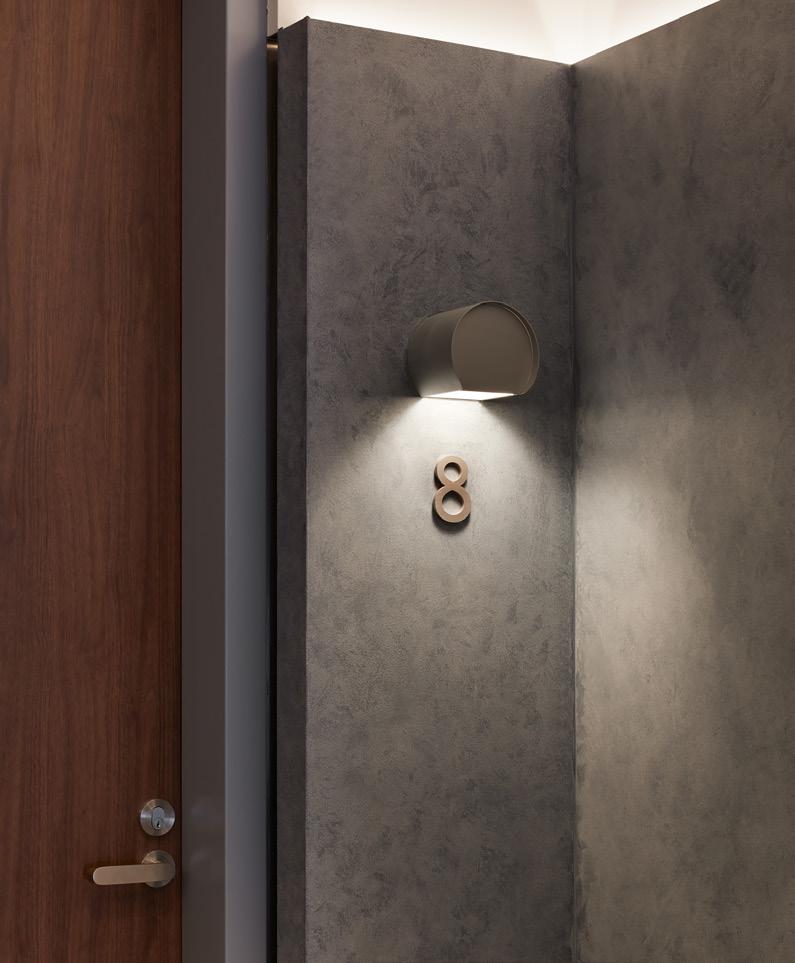
While we want our homes to be serene, we also want them to take advantage of latest technological innovations which make us more comfortable, save time or help the environment.
The smart home trend is seeing more people install heat exchange appliances, which save energy by re-using generated heat, to deliver air handling and hot water systems.
Air filtration systems are being used to slowrelease fresh purified air throughout the home, and coupled with ceiling fans, deliver a pleasant year-round climate without the use of air conditioning. This outcome is better for your health, the environment and household budget6
There has been significant progress made in the data exchange between interconnected devices within the household. Advancement in home intuitive lighting control systems could soon remove the need to switch a light on or off.
SJB’s Haddow explains: “Systems and light fittings can replicate circadian rhythms so that it’s not a one size fits all outcome. The system responds to the quality of light across the day so that you don’t have to miss the
feeling of mornings or afternoons. I also love the fact the lighting will predict your movement, power down when not required and save you energy.”
As more people consider switching to an electric vehicle (EV), the convenience of a private EV charger is paramount. By 2027, 1,880,000 Australians intend to purchase either a hybrid or fully electric car, ahead of the preference for petrol vehicles (1,689,000) for the first time7. This means potentially 607,000 additional EVs will be regularly plugging in. Our new and existing homes need to accommodate this requirement, or they may be bypassed by future potential buyers.
Access to a standard power outlet or wall box is relatively easy for homes already with off-street parking. For those who are reliant on on-street parking, many councils are developing sustainability strategies which involves providing communal EV charging options.
Separately, more councils are developing planning controls for new apartments, and strata guidelines for existing apartment blocks, to encourage the installation of EV chargers in private carparks 8
The weekly fruit and veg box, an unexpected bunch of flowers for a job well done, last night’s Amazon purchase and an unbranded package ordered online a couple of months ago containing an outfit too small for your new puppy. More people are being invited to our front door than ever before.
Across the nation, 9.5 million households received a parcel from online shopping in 2023, delivered by the Australia Post Group9 However, according to a survey published in April 2024, around 18% of Australians had a delivery package stolen from outside their front door, doubling the percentage recorded in 202210.
Regional Australia has seen the strongest retail home delivery growth, with an 18% increase in households shopping online since 2019, compared to a 16% rise for metropolitan areas11 . By 2030, the Australian Retailers Association forecast further significant growth in online retailing12
For those who have not yet installed an all-weather secured parcel box, or an interactive camera in the home doorbell, tracking a parcel delivery to the front doorstep can raise angst especially when awaiting high value items.
While there have been progressively more metal parcel locker systems, refrigerated lockers and intelligent mailboxes installed in foyers of apartment buildings in recent years13 , thermal lockers are the latest device to support the growing online food delivery market.
Thermal lockers are covered by the delivery companies, rather than the building owners and can keep food warm for up to three hours14 . Already common across China, the hope is to alleviate the need for time-poor delivery drivers hovering in the downstairs foyer of residential towers lingering to exchange with online customers who didn’t fancy stepping out.
The redevelopment of New York’s Waldorf Astoria has introduced a unique feature for their branded residences, which is now a feature being considered for new residential developments here. A concierge closet is seamlessly integrated into the entryway design of each home at The Towers, accessible from the common corridor and conveniently within the residence15 . The closet can securely receive the private delivery of packages, as well have capacity for storing dry cleaning and 24-hour room service trays.
When it comes to personal safety, SJB’s Haddow says the answer is not to install fences and bars on windows, but instead to design homes that make our streets more visible and active.
“We need to create homes that look onto the streets to deliver casual visual surveillance, rather than homes that turn their back on the street,” he said.

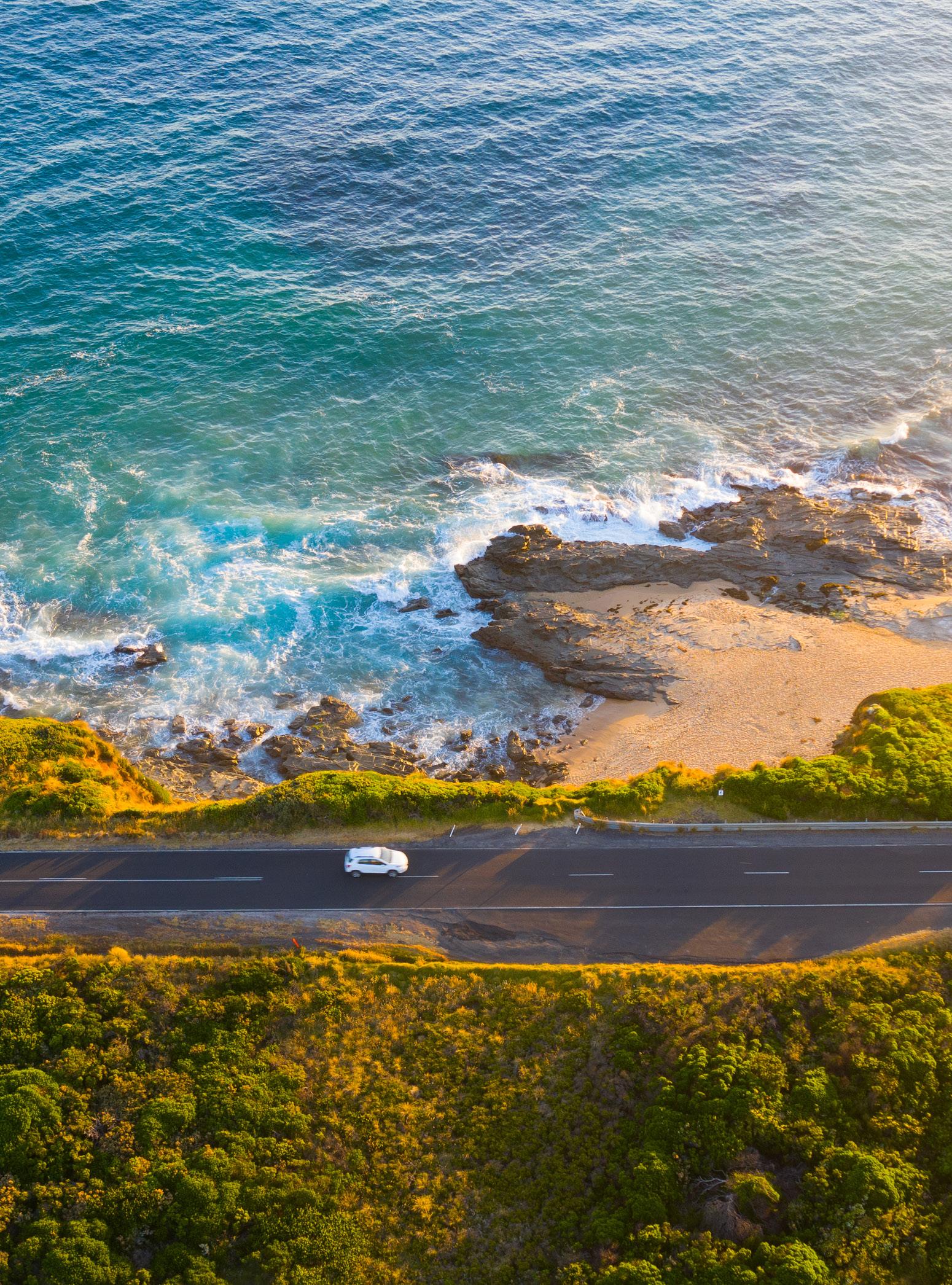
Half the Australian population is estimated to reside within seven kilometres of the nation’s coastline, which extends 34,000km around the country16 . The coastal fringe tends to have a more desirable climate and captures most of our central business districts, international ports and airports for the capital cities, along with a beautiful natural environment throughout regional coastal areas.
Given many people have a strong desire to live close to the water, it’s no surprise that four out of the five top Australian regional areas are situated along the coastline17
The Sunshine Coast local government area holds top position, with an 11.8% share of net migration from capital cities to regional areas in the year to March 2024. Next in line was the Gold Coast, with a 10.8% share, while Lake Macquarie, which is nestled between the Central Coast and Newcastle in NSW, ranked fourth with a share of 4.7%. The fifth spot was taken by Greater Geelong – the gateway to Victoria’s Great Ocean Road – with 4.6%18 . All four coastal areas are located within a 150km radius and a commuting distance to their closet capital city.
When making the move, Queensland continues to be most favoured. Seven of the ten most in-demand Australian regional coastal suburbs for home buyers were in regional Queensland, based on average enquiries per listing on realestate.com.au in April 202419.
A similar migration pattern is underway on the NSW Central Coast. According to the national online removalist booking platform Muval, more people moved to the Central Coast (and less people left) than any other Greater Sydney region in each year since 2019. This Central Coast net migration trend has been strengthening since 2021 20 .
McGrath Central Coast Group Principal, Mat Steinwede, said the proximity to Sydney is a drawcard for those moving to the Central Coast whilst seeking a coastal lifestyle change.
“We have been inundated with enquiries from potential Sydney buyers who are planning to move up to the Central Coast” - Mat Steinwede
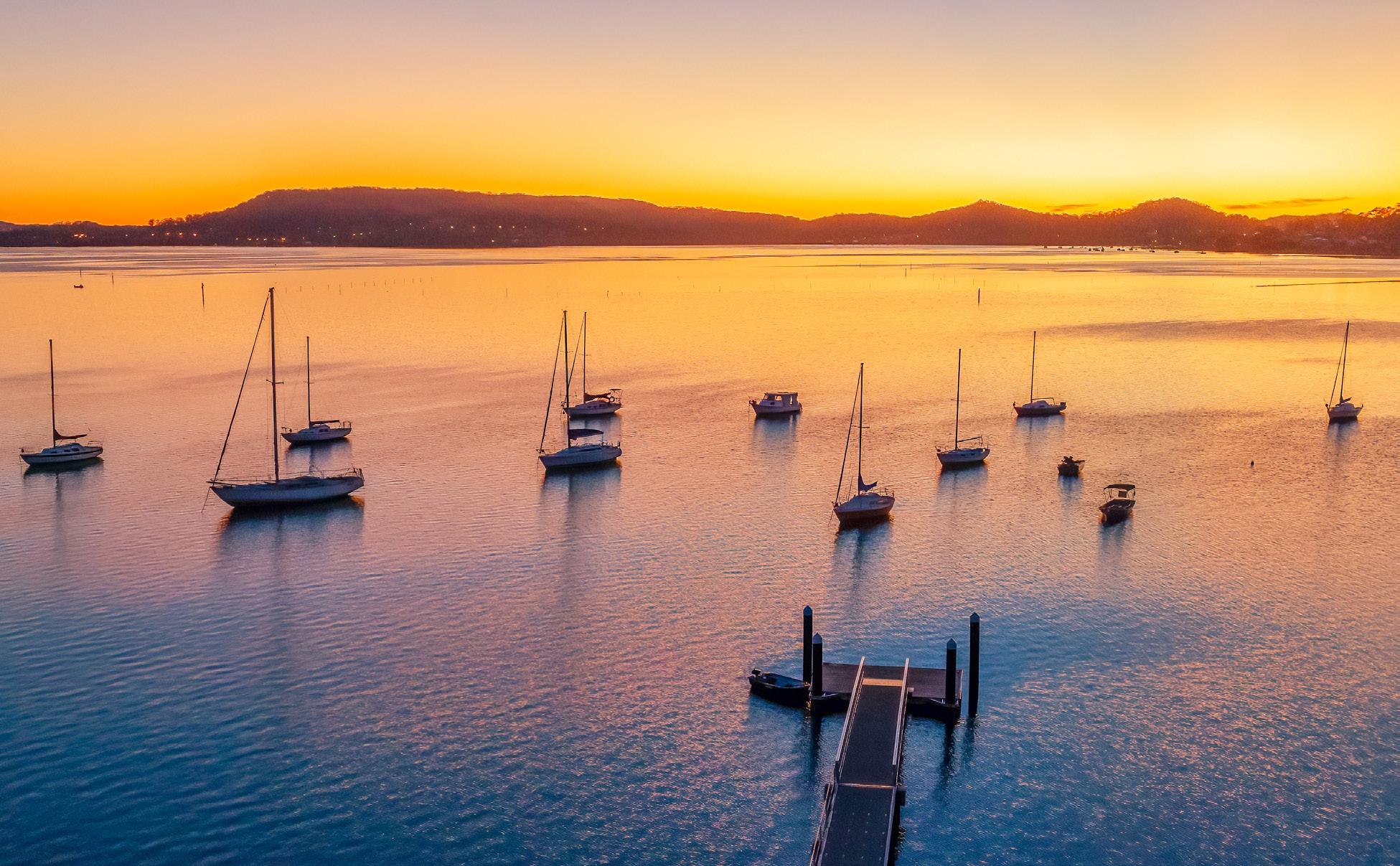
“We have been inundated with enquiries from potential Sydney buyers who are planning to move up to the Central Coast for the first time,” said Steinwede. “In many instances, these buyers are following family and friends that have moved up over recent years impressed with the local schools and the easy commute.
“And although the population is growing and the housing market remains tight, the idyllic coastal village feel with the local café on the beach hasn’t been lost.”
Steinwede said planning control changes to allow duplexes within some Central Coast suburbs, and the regeneration of the
Gosford City Centre with a proposed new marina and more high-rise apartments, has opened further opportunities for investors, added rental homes and delivered low maintenance dwellings with better walkability suitable for downsizers.
“For those aspiring to live on the absolute waterfront and have a boating lifestyle, the Central Coast remains within reach and about a third of the price you would expect to pay in Sydney,” said Steinwede.
“In saying that, there are not too many deep waterfronts, so discerning buyers need to be willing to wait for the right property.”
Recent data prepared by CoreLogic shows that coastal buyers have benefitted from comparatively high dwelling price growth, and their budget is often stretching further in regional areas.
In FY24, 220 coastal suburbs in capital cities, and 356 coastal suburbs in regional areas, recorded more than 20 residential sales 21 . Across these suburbs in both city and regional areas, more than 60% recorded FY24 median dwelling price growth of 5% or higher, which demonstrates consistent market-wide capital performance.
Meanwhile, some one-third (31%) of the city suburbs, and 17% of regional suburbs, registered growth of 15% or higher. Regional markets which registered the most significant growth in FY24 were likely to have benefitted from buyers choosing the market because it presented comparatively higher levels of housing affordability 22
In FY24, median dwelling prices in city coastal suburbs grew by an average 10.9%, compared to 8.3% across all suburbs in capital cities.

All capital city suburbs
Capital city coastal suburbs
All regional suburbs
coastal suburbs
Source: CoreLogic, FY2024
Overall, coastal areas have shown strong capital growth compared to the national market. In FY24, median dwelling prices in city coastal suburbs grew by an average 10.9%, compared to 8.3% across all suburbs in capital cities. Meanwhile, prices in regional coastal suburbs rose by 7.8%, compared to 7% in all regional areas.
What’s more, in NSW and Victoria, coastal buyers can get considerably more bang for their buck in regional areas, compared to capital cities.
For instance, Dover Heights, in the eastern suburbs of Sydney, was the most desirable coastal Sydney suburb in June 2024 with a median dwelling value of $5,463,711. Compare this to Gerroa, which was the most expensive regional suburb in NSW with a median value of $2,103,965 – around 39% the price of Dover Heights.
In the same month, the Mornington Peninsula’s Portsea had a median dwelling
value of $2,930,422, the highest across Melbourne’s coastal suburbs. This compared to Aireys Inlet, which was the most attractive Victorian regional suburb with a median value of $1,765,591 23
Bucking this trend is Queensland, where coastal regional areas in June 2024 had more expensive housing, compared to the city. For instance, the popular Sunshine Coast suburbs of Noosa Heads (median value of $1,870,804) and Sunshine Beach ($1,774,691) now outpace Brisbane’s highest median value of $1,679,718 at Point Lookout located on North Stradbroke Island24 .
Despite strong growth in coastal dwelling values, in June 2024 some 34% of regional coastal suburbs 25 had a median dwelling value which was more affordable than regional Australia’s median dwelling value of $627,872 26 . Regional Queensland offered the best value, namely at Dolphin Heads ($292,699), Forrest Beach ($303,922) and Barney Point ($315,946) 27 .
Living alongside the coast remains the ultimate luxury for many, with absolute waterfront properties offering unrivalled lifestyle advantages. An unencumbered frontage provides private waterfront access, uninterrupted water views and the potential for maritime facilities such as a jetty, pontoon or slipway.
McGrath Research data shows that Australian buyers, more so than in many other parts of the rest of the world, are willing to dig deep into their wallets to achieve this lifestyle.
In March 2024, out of 20 global luxury residential markets, Sydney had the highest price differential between a home on the water’s edge compared to a similar dwelling
one mile (1.6km) inland. Sydney recorded a 124% waterfront premium, up from a 95% premium in 2019. This result trumps the premium recorded in other storied international locations such as Miami (93%), Lake Como (83%) and the Bahamas (72%), along with the 49% average premium around the globe28 .
Brisbane’s waterfront premium has increased 45% in 2019 to 56% in 202429 (which is on par to the 57% premium recorded for a waterfront home in the Algarve on the southern coastline of Portugal) 30. Melbourne’s premium has recorded sharp growth, from 27% in 2019 to 41% in 2024 31 , to now be on par with the 40% premium paid for a Paris waterfront on the Seine 32
Australian waterfront homes had some of the largest value uplift around the world in Q1 2024



Tapping into a supportive network of parents, family and friends is increasingly becoming a pathway to home ownership and leading to changes in preferred dwelling types and city planning.
An October 2023 survey found 7% of Australians had either moved back home with their parents, or were a parent and had an adult child return home, in the previous 12 months. Among this group of people, 30% did so to save money for a deposit33 . This finding is supported by a March 2023 report which found that 9% of Sydneysiders aged 25-34 years are now living, or intend to live, with parents or other family members as a financial strategy for purchasing a home 34
It now takes home buyers, on average, 10 years to save a deposit for the great Australian dream 35 , despite 48% of first home buyers exploring government assistance schemes 36 . Dipping into the Bank of Mum and Dad appears to be an important piggy back to home ownership with 45% of recent home buyers receiving financial assistance from family to purchase their first home 37 .
High housing costs have resulted in less young adult children leaving the family home by their 30th birthday. In 2021, 54.3% of men and 46.7% of women were still living with their parents at this age, compared to 46.6% of men and 35.9% of women 20 years earlier 38 .
Percentage of men and women still living at home at age 30


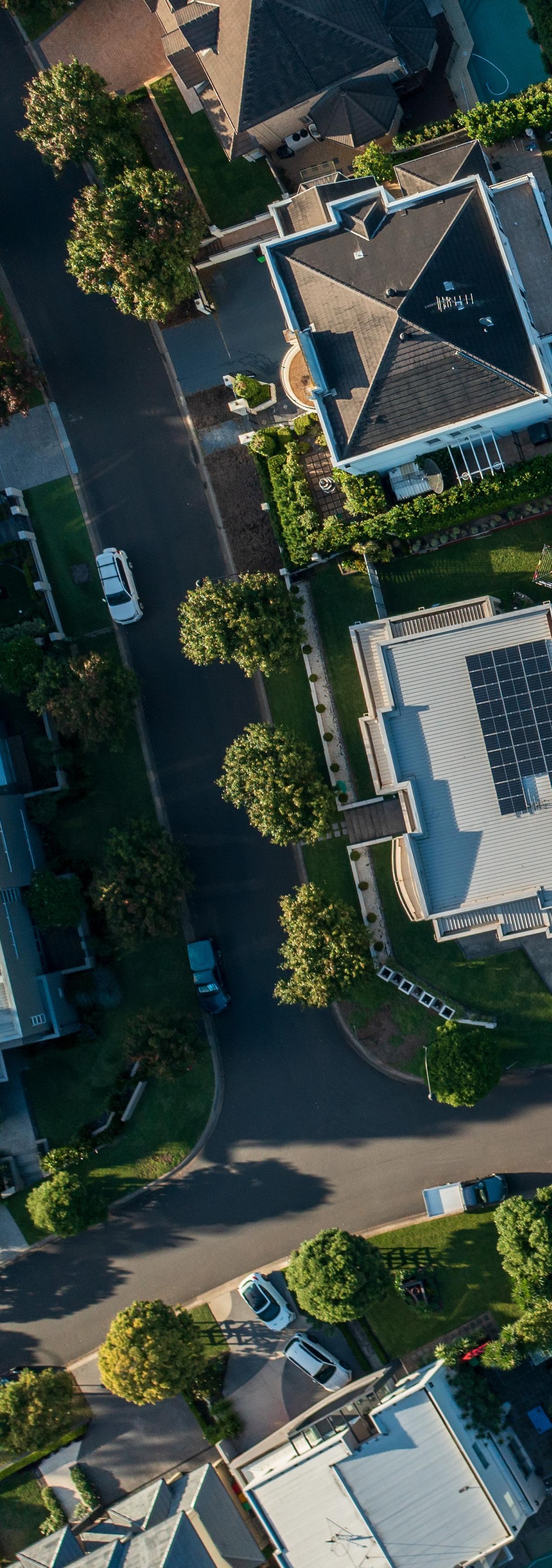
As a result, many families are preferring larger homes with multiple living areas, ahead of modest homes, and holding these homes for a longer period.
Multi-generational household formation is also being driven by the ‘sandwich generation’ welcoming the care of older relatives into their family home. With an aging population39, these types of living arrangements are likely to intensify in the coming years.
At the same time as more families are living together in the suburbs, governments are working to enhance the liveability of these areas.
Under the Thriving Suburbs Program, the Federal Government is investing $350 million over the next three years towards driving local economic prosperity by building community-focused infrastructure throughout new and outer suburbs of Australia 40. This complements the $150 million urban Precincts and Partnerships Program aimed at unifying urban places, growing economies and serving communities, alongside the previously signed City Deals commitments 41 .
Self-contained secondary dwellings are an emerging solution for homeowners looking after the generations either before or after them, and who also want to increase the value of their property.
States across Australia are encouraging secondary dwellings as an immediate and cost-effective opportunity to deliver necessary housing supply. This could be in the form of a 'Fonzie' flat, often found above an existing structure like a garage, or the traditional granny flat, which is typically located as a detached dwelling in the backyard.
A study has highlighted the growing development opportunities for 655,792 new granny flats in suburbs across Sydney, Melbourne and Brisbane. The ideal granny flat was defined as a two-bedroom selfcontained dwelling with one bathroom and an internal space of more than 60sqm.
The most development opportunities for granny flats were found to be in Sydney (242,081 potential sites), followed by Melbourne (229,051) and Brisbane (184,660) 42 .
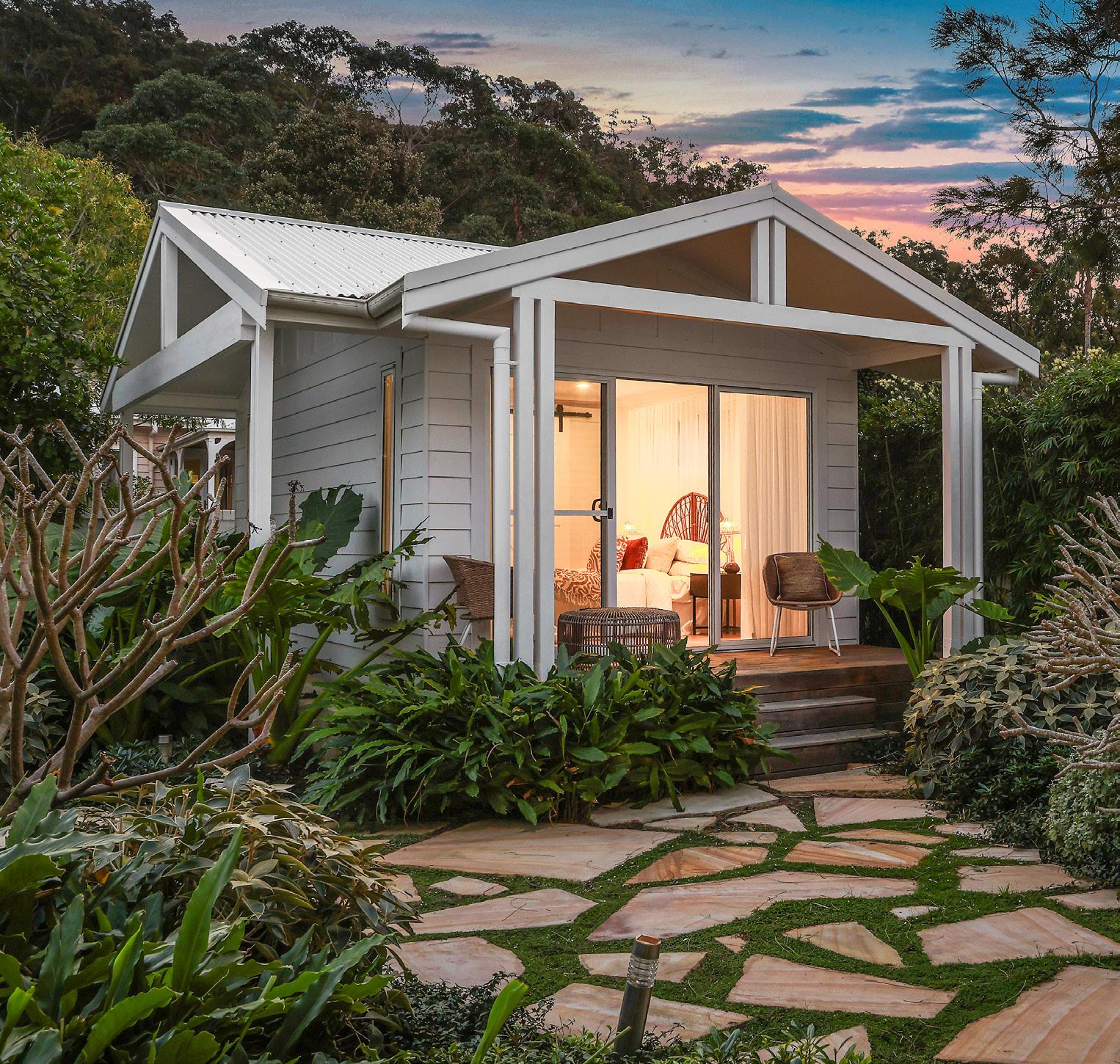
For most of the 20th century, the sight of a few bikes left scattered on a suburban home’s front lawn was a sure sign that local kids were playing in the backyard after school. That home was often sitting on the fabled quarter acre block, or 1,012sqm.
However, this scenario is rapidly moving into the rear view mirror, as governments grow wary of the high costs of delivering infrastructure and services to support large new housing blocks on city fringes, and as buyers look for low-maintenance and lifestyle-rich accommodation in existing urban areas. This has increasingly required our cities to build more on less land 43 .
In 2023, soft consumer demand and industry capacity constraints led to a 33% reduction in the number of urban fringe housing lots being released to the market, compared to the annual average across the previous decade 44 . In addition, the average size of these lots dropped from 481sqm in 2014 to 414sqm in 2023 45 .
This trend towards more efficient housing will only continue, with the NSW Government announcing plans to allow townhouses, terraces, duplexes and small apartment buildings across more residential zones 46 , and the Victorian Government promoting fast-tracked and ready-made approvals for apartment buildings up to three storeys near train stations and key centres 47
In line with the same trend, Australia’s suburbs are increasingly reaching for the skies.
In 2021, apartments comprised some 21.6% of homes in Australia’s East Coast capital cities – that is Brisbane, Melbourne and Sydney. This compares to an 18.9% apartment share of all homes in 2011. Between 2011 and 2021, Brisbane experienced the greatest growth in new apartment dwellings (56.1%), followed by Sydney (43.4%) then Melbourne (26.7%) 48 .
This apartment surge has led to a dramatic change to the skylines of our East Coast capital cities, with an average apartment tower height of 13.6 storeys for all high-rise buildings 49 built between FY15 and FY24.
In coming years, middle ring suburbs in these cities will challenge the traditional supremacy of inner ring suburbs when it comes to the skyscraper stakes 50. The average height of all proposed middle ring suburb towers is 17.7 storeys, compared to just 16.2 storeys in inner ring suburbs 51 . This is a reversal of the situation across the last decade from FY15 to FY24, when towers to an average of 14.7 storeys were built in inner ring suburbs, compared to just 12.7 storeys in middle ring suburbs.
Source: McGrath Research
Proposed Inner Ring Suburbs
Average
16.2 Storeys
Built Inner Ring Suburbs
Average
14.7 Storeys
Middle ring suburbs with the highest average proposed towers will be Sydney’s Parramatta (35.4 storeys), Melbourne’s Box Hill (23.2 storeys) and Brisbane’s Indooroopilly (12.5 storeys) 52
A key issue, however, is that the supply of apartments has not kept pace with demand, due to planning delays, high building costs and shrinking developer finance. The number of new apartments built in East Coast capital cities in 2023 was 60% below the annual average of 37,380 apartments built between 2013 and 2022 although there are signs that construction has been picking up momentum since this time 53
Proposed Middle Ring Suburbs
Average
17.7 Storeys
Built Middle Ring Suburbs
Average
12.7 Storeys
As a result, in FY24, established apartment price growth outperformed house price growth in Brisbane, Melbourne and Hobart and recorded a national increase of 6.5% 54
This scarcity of newly built apartments in recent years will likely continue to place upward pressure on apartment prices, as more buyers turn to this housing option 55 . This is despite the fact that building cost escalation has eased in the first half of 2024 56 , resulting in more homes coming on to the market in line with the National Housing Accord target to build 1.2 million homes by mid-202957.


Decisions made by Baby Boomers will have a significant flow-on effect to other generations.
Baby Boomers were born between 1946 and 1966, a period during which Australia enjoyed solid economic growth and a consequential surge in birth rates. The lower cost of housing when measured against earnings, and an earlier inheritance from their parents, paved the way to early home ownership for the Boomer generation.
By the time Baby Boomers were 39 years old, 19.4% already owned their home outright, compared to just 5.7% of the Gen Y generation at the same age 58 . This scenario has helped turbo-charge wealth creation for Baby Boomers, given their lower reliance on fluctuating mortgage interest rates and significant capital appreciation over this time.
Flash forward to today, Baby Boomers hold close to half of Australia’s private wealth, despite comprising only 21% of the country’s population 59. Baby Boomers, aged 60 and over, currently own a combined $4.5 trillion, with at least $3 trillion of this – much of it in property – to be passed on to their children over the next decades 60
Given their relative importance in Australia’s real estate market, any property-related decisions made by Baby Boomers will have a significant flow-on effect to other generations.
As Baby Boomers reassess lifestyle, wellbeing and financial factors, which they increasingly do as they age 61 , downsizing from the family home to one with less upkeep becomes a viable consideration. The move can also deliver an opportunity to bring to fruition the capital gains their homes have amassed over the decades of ownership.
Upon the sale of their home, the downsizer super contribution scheme can become available for Australians aged over 55 years to contribute $300,000 per spouse, into their superannuation fund tax-free 62 . This incentive scheme is designed to encourage more Baby Boomers to consider selling homes which are more suitable for younger, growing families in the local area.
Whilst some potential downsizers need to carefully consider the impacts of a home equity release on asset thresholds which apply to income support payments, these issues do not come into play for the one in three Australians aged over 65 who are fully self-funded retirees 63 . For those who are reliant on the aged pension, the Federal Government from 1 January 2023 increased the period that home sale proceeds are exempt from the asset test, from one to two years, to encourage more downsizing to take place 64

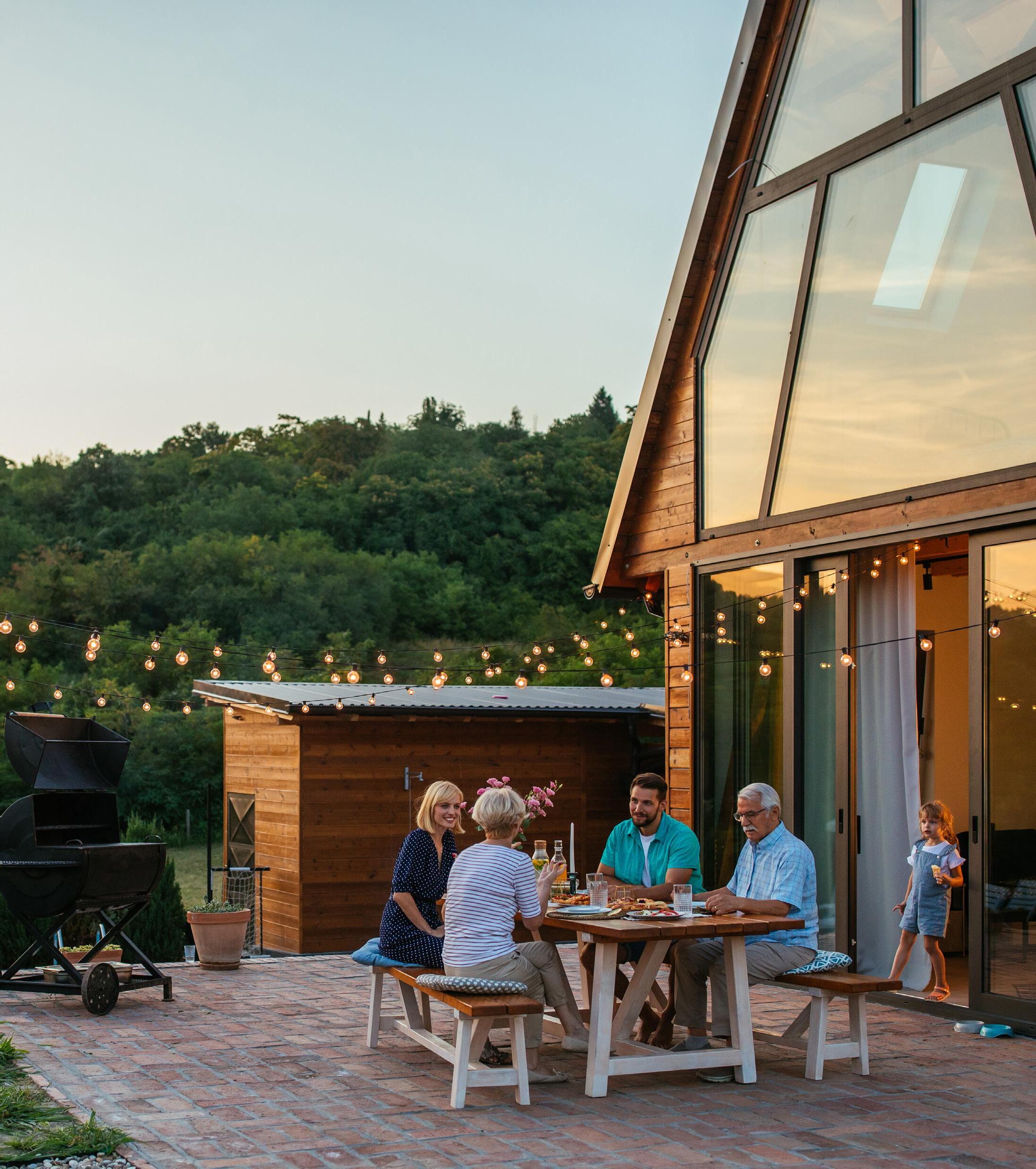
As Baby Boomers reassess lifestyle, wellbeing and financial factors, which they increasingly do as they age, downsizing from the family home to one with less upkeep becomes a viable consideration.
Many Baby Boomers aspire to find a home which is safe, has space for hobbies and guests, is near public transport, requires little maintenance and has room for a small garden. Given it is the mortgagefree Baby Boomers who currently have the discretionary cash to drive growth in holiday travel 65 , many also want a lock-up-andleave enabled homebase 66 .

Therefore, it is not surprising that, as people become older, they become more interested in moving into medium and highdensity attached dwellings, such as semidetached homes, terraces, townhouses and apartments. These types of smaller dwellings are preferred by 29% of people aged 75 and above, compared to just 22% of the 55-64 years cohort67. Some 79% of Australians aged 65-74 years are seeking homes no larger than three bedrooms 68

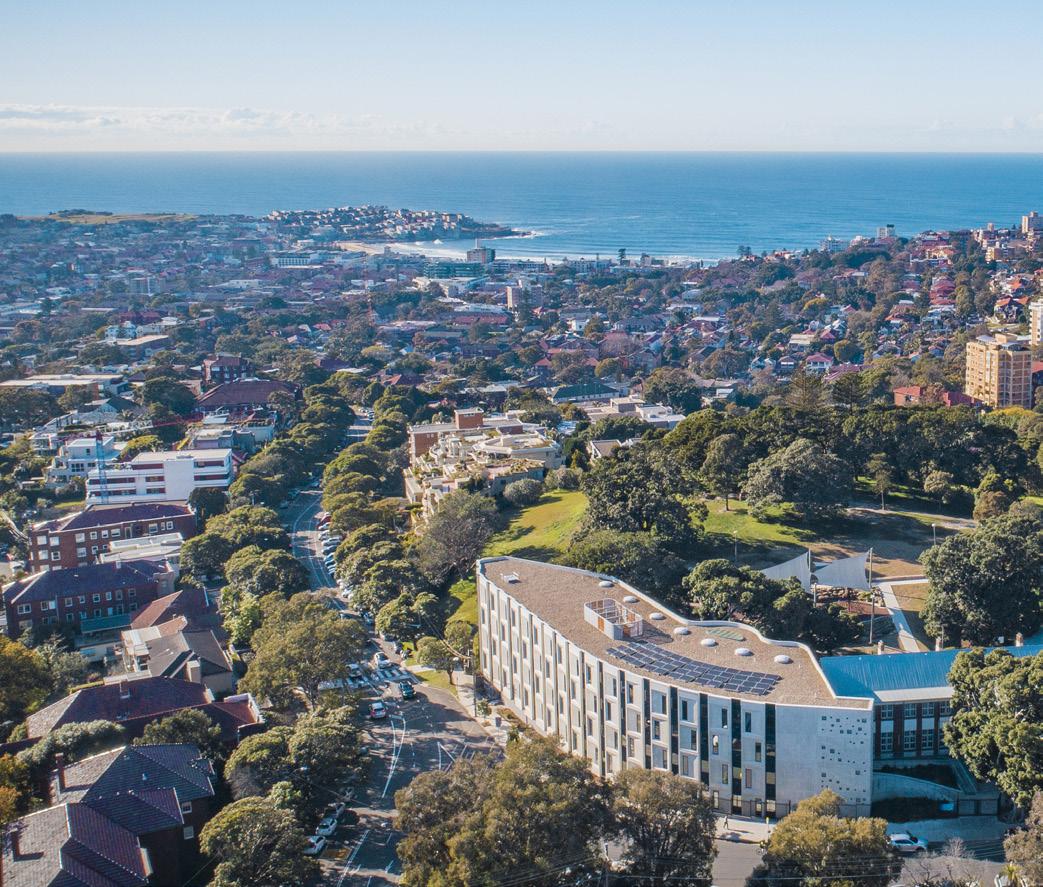
However, to date, it has been difficult for Baby Boomers to find the types of homes in their preferred locations 69. Some 40% of potential downsizers have reported they would be likely to move if they could access suitable housing in the right places70
The good news is that things are about to change. More supply of quality, affordable housing will likely be made available over the medium term as the National Housing Accord is embraced by all levels of government, investors and the residential development, building and construction sector. This is likely to benefit Baby Boomers and have a flow-on effect across the entire property market.
For landowners and developers, this presents a strong opportunity to take advantage of new planning controls to supply new housing stock which will meet the needs of downsizing Baby Boomers. Already architects and developers are catering for this trend by delivering spacious and luxurious inner-city apartments71 Meanwhile, retirement villages are close to capacity, recording a vacancy rate of just 5% in 2023, down from 11% a year earlier72
For the downsizers, there is the opportunity to release significant equity from the family home and therefore boost funds for a more aspirational and exciting retirement.
Some 22% of downsizers stay in the same neighbourhood73 . For Sydney downsizers who adopt this approach, the suburbs with the greatest percentage difference in value between a house and an apartment in June 2024 were Bellevue Hill (87%), Vaucluse (84%) and Strathfield (79%). In Melbourne, the best suburbs under this scenario are Hawthorn (80%), St Kilda West (77%) and Malvern (74%). In Brisbane it’s Ascot (72%), Hamilton (71%) and Clayfield (69%) whilst down in Hobart, Sandy Bay (50%), Blackmans Bay (37%) and Bellerive (31%) top the list74
However, not all downsizers want to age-inplace, with 79% moving to a new location75 , often to escape the rising density and bright lights of the city for the regional areas. It has been reported that older Australians are happiest when they retire to small regional towns due to their quiet and carefree lifestyle, clean country air and affordable homes76 .
The typical city downsizer will be able to pocket equity when moving to a regional area. Compared to their surrounding regional areas, median home values in Sydney in June 2024 were 48% higher, while in Melbourne the difference was 37% and Brisbane 32%77. The difference is even greater when moving from a city house to a regional attached dwelling.
This downsizer interest in small regional towns is having a flow-on benefit to dwelling values in these towns78 while also making it easier for young families to move into existing and vacated larger dwellings in capital cities, ensuring these dwellings are better utilised.


Sydney & Surrounds
MEDIAN HOUSE PRICE
$1,471,892
MEDIAN APARTMENT PRICE
$859,050
CORELOGIC, SEPTEMBER 2024


Home prices in Australia’s most valuable market surged to a new record peak in June 202479 despite higher interest rates and cost-of-living pressures. This was due to a restricted supply of homes for sale amid many demand drivers, including wealthy Baby Boomers rightsizing their homes while also serving as the Bank of Mum and Dad to first home buyers, and a buoyant trophy home market.
Overall, Sydney dwelling prices rose by 6.3% to a median $1,170,152 in FY24, in a capital growth rate effort that easily outperformed Melbourne, Hobart and Canberra but was well below Brisbane. This included a 6.8% increase in the median house price to $1,466,475 and a 5% lift in the median apartment price to $855,468⁷⁹.
Despite higher interest rates, price growth has given buyers and sellers confidence to transact. However, many buyers must compromise due to restricted lending capacity, leading to stronger demand and price growth for houses in cheaper suburbs, as well as apartments across the city as more people compromise on the type of home they buy to suit their budget80
Meantime, annual new residential building approvals 81 are at decade-lows due to higher interest rates, a labour shortage, high construction materials costs and difficulty obtaining council permission. This is exacerbating tight supply and contributing to the unusual situation of rising home values amid higher interest rates.
There is strong demand in Sydney from three key buyer groups – Baby Boomers and other cash buyers, first home buyers and investors.
More than one in four sales in NSW in 2023 were cash sales 82 , representing a large group of buyers typically towards the top end of the market who are unaffected by higher interest rates. Robust demand for trophy homes among executives and entrepreneurs led to some phenomenal prices in FY24 and FY25, including a reported $80 million for a harbourside home in Point Piper and about $80 million for a Bellevue Hill home.
Other cash buyers include Australia’s largest contingent of Baby Boomers, many of whom are rightsizing while also helping their children buy their first homes 83 .
At the other end of the market, one in four NSW buyers are purchasing their first homes and four in ten are buying investments 84 Both cohorts typically target apartments, and strong competition between them amid very low supply of new apartments led to a narrowing of the gap between Sydney’s median house and apartment price growth in FY24⁷⁹.
Across the regions, the NSW median house price lifted 4% to $763,364 and the median apartment price rose 4.7% to $590,376 in FY2479. Some of the strongest markets for price growth included the Central Coast, Wollongong and Newcastle-Maitland 85 . Unlocking new housing supply, building new essential services amenities such as hospitals
NSW is also experiencing the strongest investor activity of all the states and territories, with buyers appearing confident that the Emerald City will deliver the best longterm capital growth.

and schools, and progressively rolling out Australia's biggest public transport project, the Sydney Metro, are key components of the NSW Government’s State Infrastructure Plan 86 .
The NSW Government is attempting to deliver more supply to subdue the growth in home prices and rents. Its headline housing reform is the new Transport Oriented Development (TOD) program, which seeks to allow almost 200,000 new homes to be built close to 49 train and Metro stations. The most significant planning changes are being proposed at the Bankstown, Bays West, Bella Vista/Kellyville, Crows Nest, Homebush, Hornsby and Macquarie Park precincts, where 61,855 homes will be built87 NSW has a target of 377,000 new homes under the National Housing Accord, which aims to build 1.2 million homes between FY25 and FY2988 .
New planning rules will also allow more dual occupancies in most residential zones across NSW, while plans to encourage additional townhouses, terraces and taller apartment buildings near town centres are in the pipeline. Apart from additional supply, these
changes are designed to boost the diversity of housing stock. This will be especially helpful for multi-generational families and downsizers wanting to remain in the neighbourhoods they love.
Meantime, major transport projects are nearing completion, with final testing underway on the Parramatta Light Rail from Westmead to Carlingford 89 and the highfrequency Sydney Metro extension between Chatswood and Sydenham that opened in August 2024. The new Western Sydney International Airport remains on track to open in 2026.
Sydney and NSW are Australia’s most expensive city and regional markets, and therefore the most sensitive to changes in interest rates. An anticipated rate cut in 2025 may spark a new surge in demand, leading to further price rises. NSW is also experiencing the strongest investor activity of all the states and territories 84 , with buyers appearing confident that the Emerald City will deliver the best long-term capital growth. This means many people are thinking about their next move in Sydney property sooner, rather than later.

Canberra’s median weekly rent for all dwelling types is $674, which is the second highest in the country behind Sydney.
The Canberra market stabilised and began its recovery in FY24, delivering modest home value growth which was on par with Brisbane and Sydney but outperformed Melbourne and Hobart. Dwelling prices lifted 2.2% to a median $870,07190. The median house price rose by 3.2% to $986,414, while the median apartment price weakened 1.1% to $587,051.
Separate Canberra buyer groups are being driven by different motivations.
Owner-occupiers, for instance, are preferring renovated houses91 because high building materials costs and a shortage of tradies are making renovations too hard. Affordability is challenging for first home buyers but they remain enthusiastic, comprising a third of the market 92 . They are targeting apartments, townhouses and affordable newly built houses on smaller lots in new suburbs.
Investors, meanwhile, represent almost 40% of the market in Canberra92 . They are drawn to the city for its high weekly rents, a sizeable pool of long-term tenants, and increasing opportunities to buy new apartments with attractive yields and tax depreciation benefits. Despite continuous new supply, rental yields for Canberra apartments remain strong at 5.1%. That’s higher than Sydney (4%), Hobart (4.6%), Melbourne (4.7%) and Brisbane (4.8%). Canberra’s median weekly rent for all dwelling types is $674, which is the second highest in the country behind only Sydney 93
As part of the Australian Capital Territory (ACT) Government’s commitment to the National Housing Accord, new planning reforms now in place are designed to raise the supply of smaller, more affordable homes to buy and rent in established suburbs. One reform allows owners of residential blocks over 800 sqm to build and unit-title a second home no larger than 120 sqm on their land94 . Updated design guidelines and district strategies are intended to ensure all infill development preserves each suburb’s character.
The ACT Government is also using tax reform to improve affordability for key buyer groups.
Home buyers can now earn $250,000 a year (or more if they have children) and avoid $34,000 in stamp duty on the first $1 million of their purchase95 . This compares to the previous $170,000 income threshold. But they now must not have owned a property for five years, instead of two years, to be eligible.
Also, downsizing pensioners can now avoid duty on the first $1 million of their purchase (previously $550,000) while all buyers can avoid duty on purchases of off-the-plan apartments and townhouses worth up to $1 million (previously $800,000).
Canberra is on the cusp of a new upswing in values. Given the city’s high median prices, anticipated interest rate cuts are likely to enable more buying activity. Greater housing diversity is inspiring more people to embrace apartment living. And the ACT Government’s stamp duty reforms may encourage more locals to change homes when it suits their circumstances.

As the Inner West gets groovier and groovier, and the Light Rail makes it a short tram ride into the CBD you can no longer resist the attractiveness of these little sleeper villages. Some of the best coffee in Sydney makes this cool precinct a no brainer.
This once working-class suburb on the edge of the CBD seems to have slipped under the radar by most. Can't fathom why. A five minute stroll to the city, Sydney University, UTS, Darling Harbour and Broadway Retail. What more do you need to realise this sleeping giant is about to awaken.
An unbeatable spot with easy access to city life. It’s a short stroll to the Barangaroo precinct and the new Metro station, or the bustling charm of The Rocks. The area has gentrified with the transformation of many heritage terraces with stunning harbour views. Subdued price growth during the COVID years has created good buying opportunities today.
Handily positioned between the airport and the CBD young families should be investigating this suburb. A vibrant mix of multi-cultural groups resembling Paddington and Surry Hills in the 80s, it offers a mix of both affordable apartments and cottages, allowing upgraders the opportunity to buy a house for under $2 million. Why wouldn't you.
Bordering the prestigious Inner West enclave of Earlwood, this little pocket must be on your shortlist. If you play golf, it has a course. If you work in the CBD, it's a few stations away. And if you like a strong long black you can take your pick of emerging cafes.
This sleepy little beachside village was up until fairly recently ‘somewhat unfashionable’ if you can believe it. Well, those days are over and this little jewel in the crown remains some of the best value on the East Coast. Work from home and commute to Sydney a couple of days a week? Sounds like heaven to me.
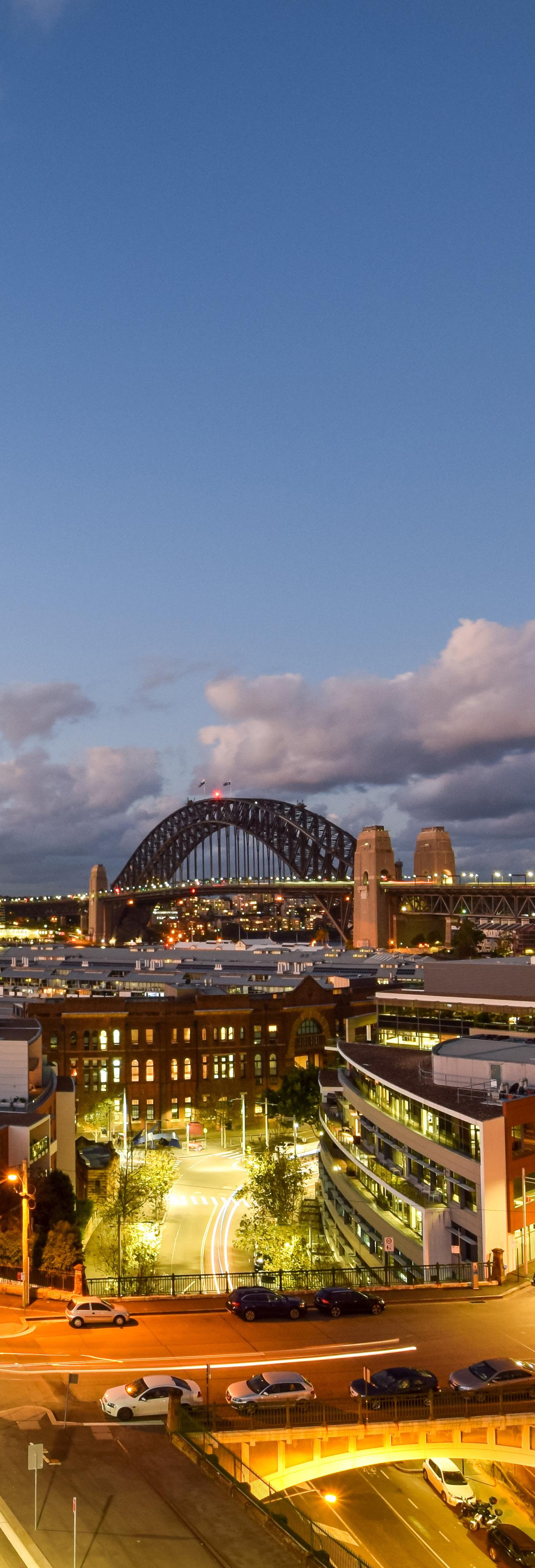






In recent times, it’s been commonplace to describe Australia as having a two-speed property market, with some capital cities and regions recording fast home price growth and others seeing only sluggish growth, or even falls. With this metaphor in mind, it’s apt to describe Melbourne’s property market as shifting into one of the lower gears, as changes to land tax and better housing supply than other capitals have kept prices relatively flat.
In FY24, Melbourne’s median dwelling prices saw a modest uptick of 1.3%, but prices declined by 0.6% in the three months to June 2024 indicating softening market conditions96 . Hobart was the only other state capital with weaker market conditions in FY24. Regional Victoria saw a 0.5% median dwelling value decline over the same period.
The soft market may have in part come about from the Victorian Government’s decision, in January 2024, to lower the land tax-free threshold for investment properties from $300,000 to $50,000 97. Victoria is now towards the bottom of the pack for investor activity. Investor lending made up 30.7% of the state’s total housing market finance commitments in April 2024. This figure was well below the national average of 37% and significantly lower than in New South Wales (42.2%), Queensland (38.2%) and South Australia (36.6%)98 .
The tax, along with high ongoing interest rates, may have also encouraged existing investors to sell up and take investment properties off the market. This is evidenced
by the fact that Melbourne saw a 39.4% surge in new sale listings in May 2024 compared with May 2023 - by far the largest increase in the country 99. Regional Victoria also saw a significant 42.6% increase in listings for the year to May 2024.
Coming at the same time as Victoria’s population increased by a national-high 186,500 in the year to December 2023100 ; the above situation is likely to have resulted in comparatively high rent increases. Median house rental prices for Melbourne increased by 9.2% in FY24, and by 7.5% for apartments in the same period101 . This means Melbourne had the second highest house rental percentage increase out of any capital city in FY24, while its unit apartment increase was in the middle of the pack.
There’s been good news, however, for both first home buyers and housing supply. First home buyers made up 32.1% of owner occupier loan commitments in Victoria in June 2024, which was higher than the national average of 29.2% in this month, and significantly more than the 10-year national average of 24.6%102 .
These buyers are no doubt taking advantage of welcome high housing supply levels, along with the exodus of investors, and ongoing benefits of state government stamp duty concessions on purchases up to $750,000103 . Over the past decade, 733,000 new homes have been delivered in Victoria, which is the best result in Australia and significantly more than NSW’s 650,000 completions over the same period104 .
This combination of strong population growth, infrastructure improvements and short-term housing supply limitations will see Melbourne’s housing market bounce back.
Looking forward, as Melbourne’s population continues to outpace other cities, and with interest rates expected to start on a downward trajectory from early next year105 , it is more than likely that property prices will see gains in the medium term.
Over the next decade, Victoria’s population is projected to increase by an average of around 125,000 per year106 . This will be happening as the same time as Victoria, like other states, struggles with continuing constraints on the building sector, including labour shortages and high material costs.
New infrastructure projects are expected to make the city’s suburbs more connected and attractive. The Metro Tunnel rail line project is set to be completed in 2025 and will
benefit people living near the Cranbourne, Sunbury and Pakenham train lines. Other new infrastructure projects include the Suburban Rail Loop (to be completed by 2035) and North East Link freeway project (to be completed by 2028)107
This combination of extremely strong population growth, infrastructure improvements and short-term housing supply limitations will no doubt see the city’s housing market bounce back. The fact that Melbourne has been named, for the past two years, as one of the top five most liveable cities in the world108 (after dropping to 10th place after the pandemic) shows it is a vibrant, desirable place to live which attracts people from around the country and world.

Photography: Adobe - Gavin

Set to get a new train station as a part of the Melbourne Airport Link, this suburb sits within the Essendon Keilor College school zone and is a stone’s throw from the M80 ring road, Highpoint Shopping Centre and vibrant Buckley Street in Essendon. Keilor East has all the charm and lifestyle of Essendon with a much lower price tag – its median house price is $1,007,551109 compared with Essendon’s hefty $1,800,000110
Just slightly inland from its namesake and arguably more famous beachside suburb, this little hamlet has parks, transport and good schools on its doorstep. It has more of a suburban feel than its more bustling neighbour, with leafy streets and art decostyle homes and apartment blocks, but it’s just a short tram ride into the heart of St Kilda. St Kilda East is ideal for investors, downsizers and first home buyers alike.
With Monash and Deakin Universities just around the corner and a plethora of restaurants, shops and transport options at its disposal, this eastern suburb doesn’t need to be close to the city. It also has two train stations – one of which is set to become part of the Suburban Rail Loop – and several bus routes. Glen Waverley could also be poised to be another job hub for Melbourne, with many businesses and government agencies, including the Department of Education, already calling it home. This suburb is one to watch.
With the West Gate Tunnel due for completion in 2025, the west is set to become more connected than ever to the CBD and the rest of Melbourne. Less pricey than its waterside neighbours to the south, Altona North still boasts lifestyle, with its golf course, Kororoit Creek Trail and multiple sports centres. It's also just a short drive to the Scienceworks museum, and Yarraville restaurants and shops, and is only 10km from the city.
With its median house price increasing by 11.5% in the year to June 2024, yet still staying at a relatively affordable $680,000 111 , this suburb on the edge of Bendigo is one to watch. Closer to Melbourne than the Bendigo CBD and surrounded by greenery, Spring Gully combines the best of both city and country living. And the suburb is set for a boom, thanks to plans for a new housing development, school and general store.

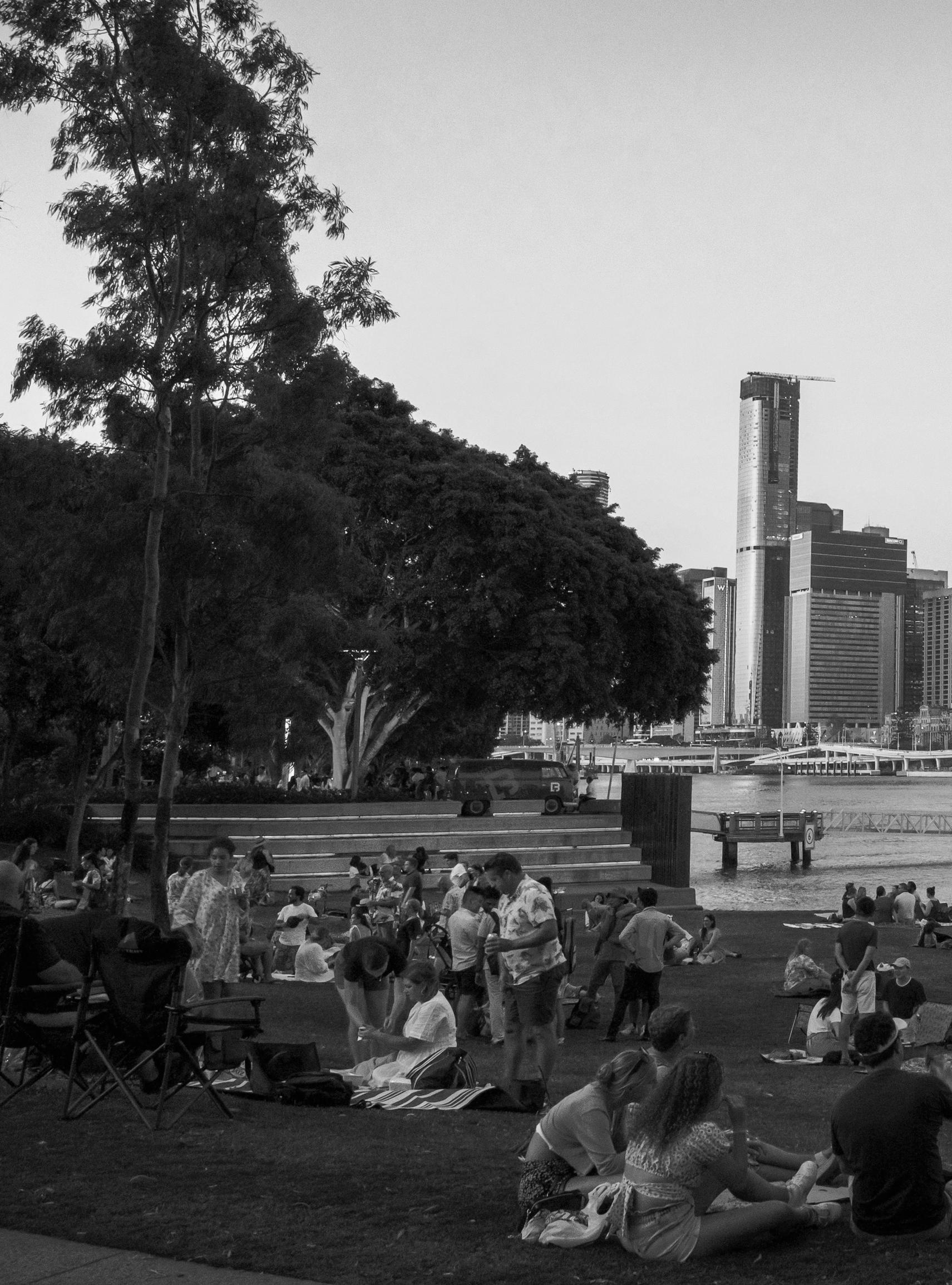



2024 was a landmark year for Brisbane, with the Olympics host city briefly taking the silver medal position among Australia’s capital cities in the property price stakes112 . In May 2024, Brisbane’s median dwelling value leap-frogged Canberra to record the nation’s second highest city median dwelling value, behind Sydney’s gold medal spot. Brisbane last held this second placed position way back in 1997.
The achievement reflected strong price growth over the past four years. Since the start of COVID-19113 to June 2024, Brisbane median dwelling prices have soared by a staggering 61.5%, compared to a combined capital city price growth of 32.6% in the same period114
There are a range of likely factors behind the price growth.
Firstly, Brisbane has continued to experience steady population growth, thanks in the main to overseas and domestic migration. Already burgeoning from an exodus of locked down Sydneysiders and Melburnians fleeing north during the pandemic, Brisbane’s population surged by a further 3.1% in FY23, reaching a total of 2.71 million. This was the third highest population growth rate of any capital city in the country, after Perth and Melbourne115 .
A strong pipeline of infrastructure works, some needed to deliver the 2032 Olympic
Given Brisbane’s population growth, infrastructure spend and Olympic City status, there is every reason to expect property price growth will continue in coming years.
Games, may also be assisting dwelling price growth. Upgrades are planned for the Queensland Sports and Athletics Centre (QSAC) and Suncorp Stadium, with the government also exploring legacy transport opportunities to link the QSAC, QEII Jubilee Hospital and Griffith University with city precincts116 .
Major construction works have also begun for the Brisbane Metro, which will link 18 stations on two lines from Eight Mile Plains to Roma Street, and Royal Brisbane Women’s Hospital to The University of Queensland117
The 10.2km Cross River Rail project, which includes twin tunnels running under the Brisbane River and CBD and four new underground stations at Boggo Road, Woolloongabba, Albert Street and Roma Street, is also set to be complete in 2025118 Construction of the 37.8km Direct Sunshine Coast Rail Line, that connects the North Coast Line at Beerwah to Maroochydore via Caloundra and Birtinya, is set to begin the following year119
Strong first home buyer activity has supported Brisbane’s property market. In FY23, Queensland had the highest per capita usage, out of any Australian state or territory, of the Federal Government’s First Home Guarantee scheme (under which the government guarantees the home loans of eligible first home buyers)120. And the trend is set to continue.
In June 2024, the Queensland Government announced it had increased, from $500,000 to $700,000, the value at which first home buyers paid no stamp duty, saving these buyers up to $17,350121
In good news for investors, Brisbane median weekly rents rose by 8% to $656 in FY24. The biggest increase was in Brisbane’s east, where rents rose by 9.9% to $734122 .
Brisbane’s housing price and population performance is also rubbing off on surrounding areas. In FY24, median home values at the Gold Coast’s Southport increased by 15.58% to $895,461, and at the Sunshine Coast’s Buderim by 15.96% to $1,110,111123 .
The Caloundra West-Baringa area, on the Sunshine Coast, also experienced the largest overall population growth (1,700 people) and growth rate (9.8%) of any Australian regional area in FY23124 . The area is home to Australia’s largest master-planned community, Stockland’s Aura development125 .
Given Brisbane’s strong population and migration growth, infrastructure spend and support for first home buyers, and its Olympic City status, there is every reason to expect property price growth will continue in the city, and surrounding areas, in coming years.
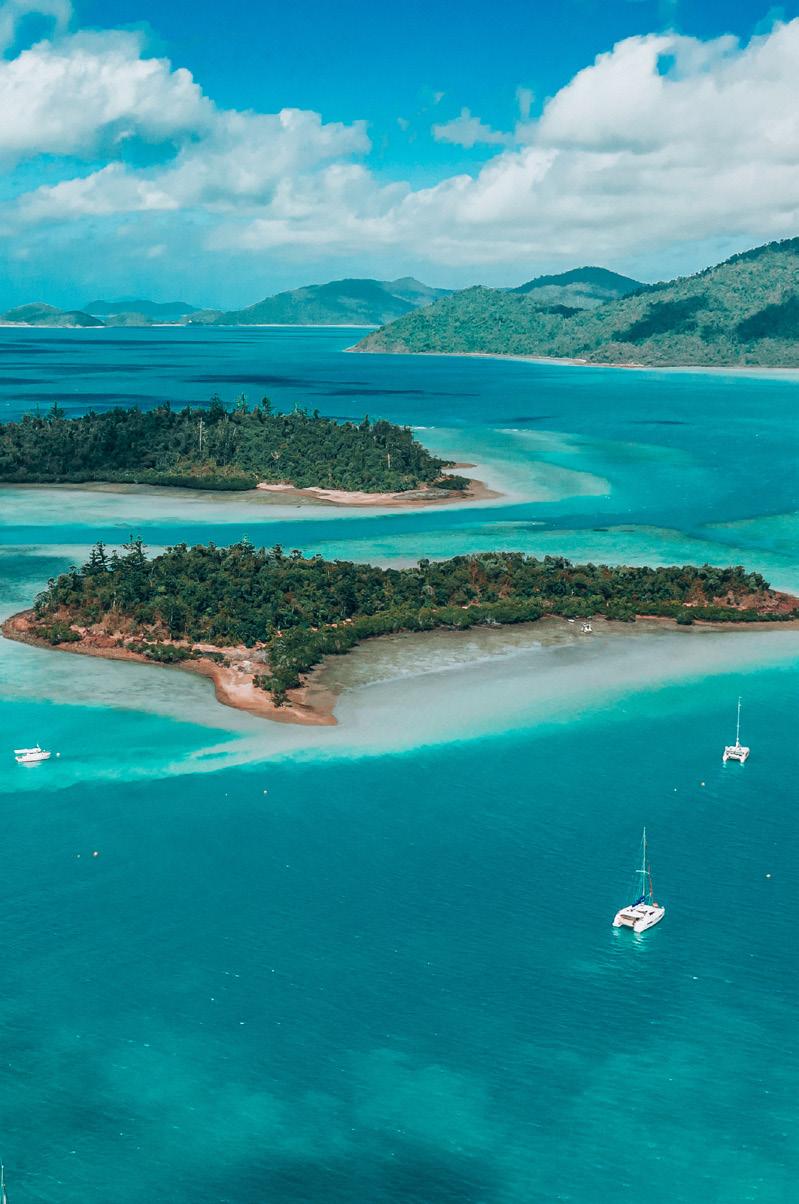
The real estate market in North Queensland is increasingly becoming as hot as its climate, with Townsville the key area to watch, thanks to its relative affordability, laidback tropical lifestyle and access to health and education facilities. Median dwelling prices in the city –which lies between Airlie Beach and Cairns –rose by 20.11% to $471,942 in FY24126.
It’s also proving an excellent place to invest. Rental values rose by 10.2% to a median of $502 per week in FY24. Cairns was also a strong performer, with median rents increasing by 7.7% to $554 over the same period127

Springwood is undergoing change as young professionals and families move in, and Baby Boomers move out. With the south western suburb boasting convenience, diverse housing options and attractions such as a 36ha conservation park brimming with koalas and swamp wallabies, it is expected to remain popular among buyers.
Brisbane’s first master planned community when built in the early 1990s, the south western suburb of Forest Lake is now coming into its own. Centred around a man-made lake, properties here offer more bang for your buck than in the inner city – and people are starting to take notice.
Located on the Bremer River 40km west of the CBD, the historic suburb of North Ipswich is set to benefit from improved Olympic public transport and infrastructure, including the $30 million North Ipswich Sport and Entertainment Precinct. It’s also a great place to nab a Queenslander at a fraction of the price you could expect to pay closer to town.
West - Sunshine Coast
Caloundra West has long played second fiddle to the neighbouring and arguably more glamourous seaside suburb of Caloundra. This is now changing, as Sunshine Coast buyers take an interest in Caloundra West’s less expensive housing. What’s more, the suburb’s location close to the coast, and the new Stockland Aura development, makes it an appealing lifestyle choice.
Savvy sea changers are snapping up properties in this surprisingly cosmopolitan city, which offers hatted restaurants, a growing number of breweries and distilleries and gorgeous beaches. Prices are still on the lower side compared to many other parts of Queensland and gross rental yield is among the highest in Queensland128 , making Townsville a safe bet for both investors and owner occupiers.
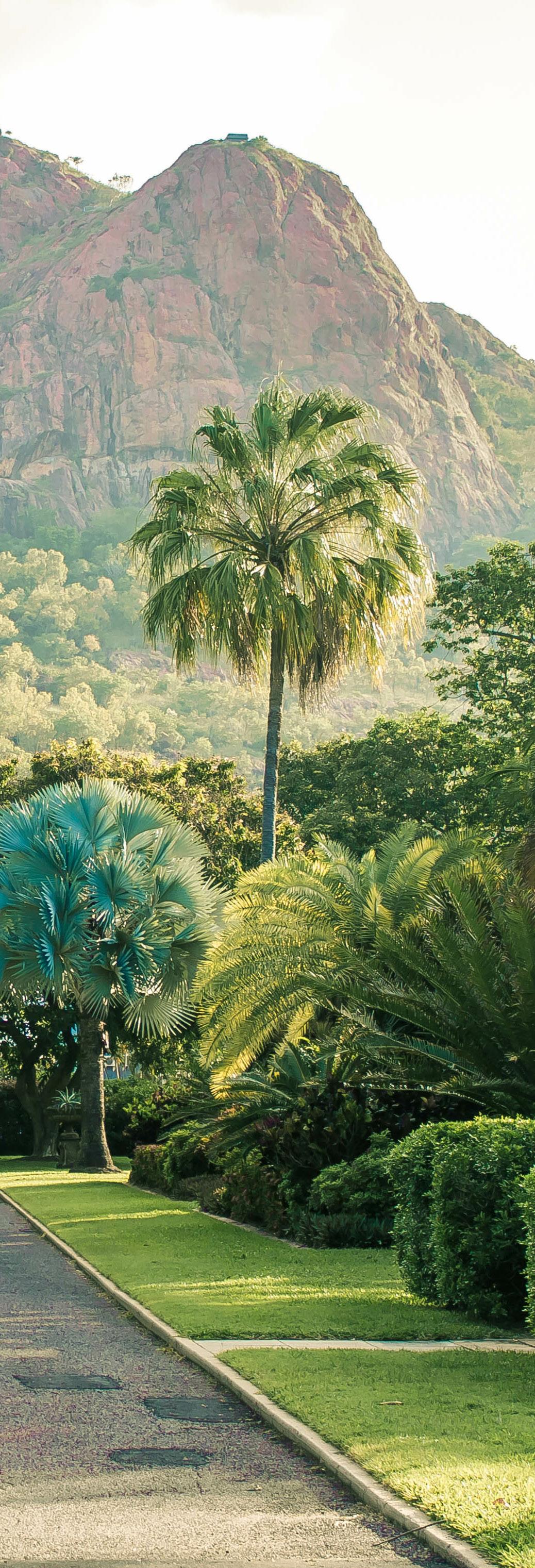
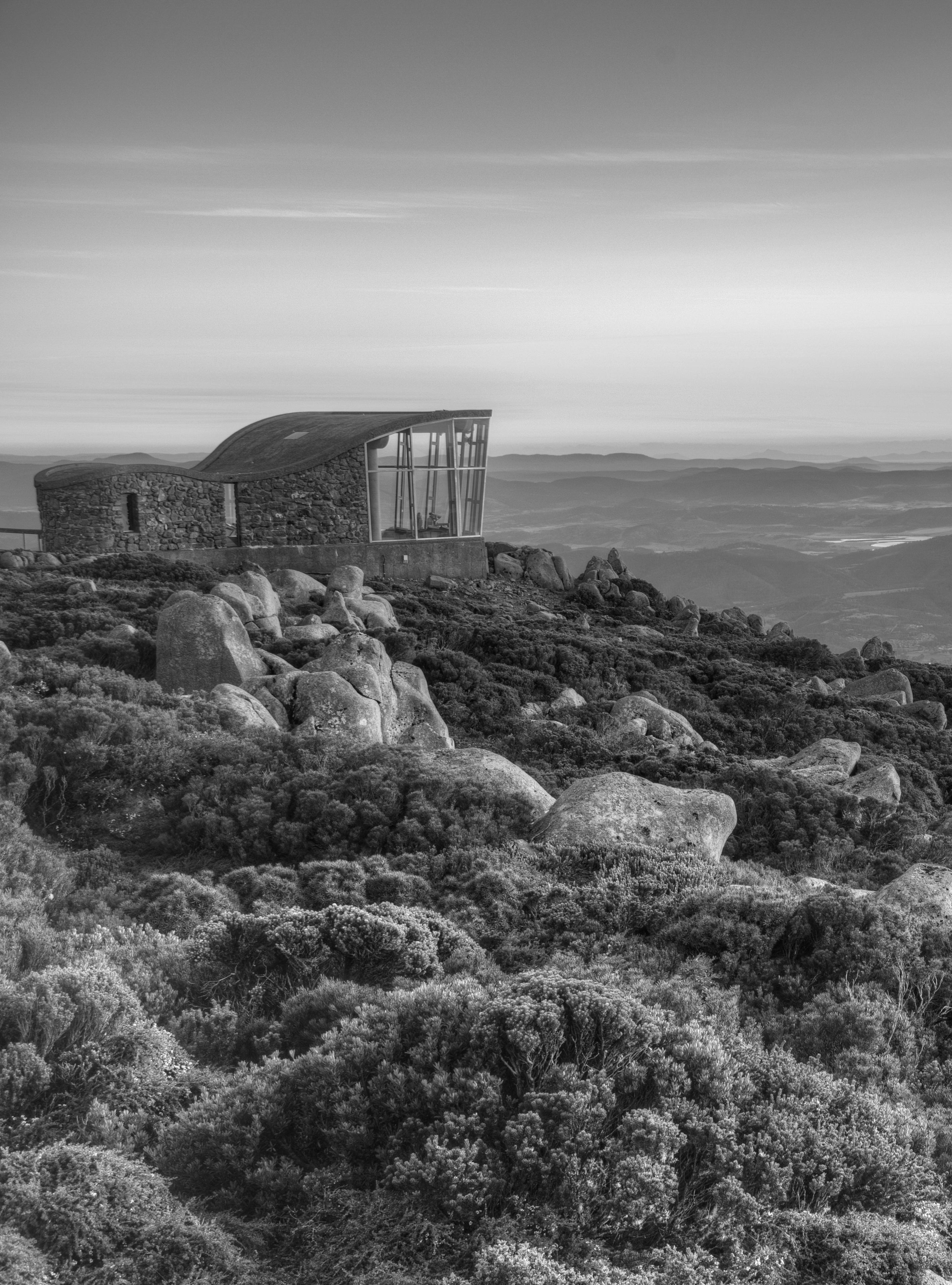



Hobart already has a reputation for a vibrant food and culture destination, a beautiful coastline and fascinating history. Now the Tasmanian capital may be about to earn another label – the home of a comparatively affordable housing market.
Softening median home values meant Hobart finished FY24 as the second most affordable capital city in Australia, and the only capital to record a median dwelling price fall over the financial year. What’s more, Hobart’s 28.1% dwelling price increase since the start of the pandemic to June 2024 may at face value seem impressive, but in fact represents the second lowest increase of any capital city during this period129
It was a slightly better situation in the state’s regions where there was a 0.7% median dwelling jump in FY24, but even this result was well below the price increase in most other Australian regional areas130
Meanwhile, rental yields in Hobart and regional Tasmania finished FY24 at a healthy 4.3% and 4.5% respectively, with both areas recording yields higher than the relevant national averages131
The above modest median dwelling price changes, strong rental returns and stock
listings which are tracking at 46% above average132 , means Hobart and regional Tasmania has become an attractive proposition for buyers looking for value and returns, in a great lifestyle location.
This is particularly the case for new entrants, who in May 2024 made-up just under one third of Tasmania’s residential property buyers. From February 18, 2024, eligible first home buyers have been able to avoid paying stamp duty altogether on established homes valued $750,000 or less. These changes will save first home buyers $28,900133
Despite inflation and mortgage rate increases weighing heavily on everybody’s minds across the country, there is a sense of optimism in Tasmania with a couple of major construction projects underway.
The new Bridgewater Bridge will make moving between Hobart and the regions to the north easier, in particular the suburbs of Granton on the southern end of the bridge and Bridgewater to the north which will benefit from improved commuter links to Central Hobart134 . Even more exciting is the proposed $715 million Macquarie Point Stadium, which will be a proud feature of the Macquarie Point Urban Renewal Project that will transform Hobart’s waterfront135

The real question will be whether the first home buyer duty concession, and the above infrastructure projects, will help turnaround low population growth which has been a lag on the Tasmanian economy and therefore its property market. Tasmania’s population grew less than half a per cent in CY23, the weakest result out of any Australian state or territory136 . On the bright side, the state’s unemployment rate has fallen from 6.3% in May 2019 to 4% in May 2024137.
Hobart has earned a new label as one of the nation’s most affordable housing markets, along its existing reputation for food and culture and a beautiful coastline.
Launceston may be the state’s second largest city in terms of population, but it’s the city’s growing cultural and gastronomic presence which is really lifting its profile. In fact, in 2019 Launceston was named a Creative City of Gastronomy by the United Nations Educational, Scientific and Cultural Organisation (UNESCO)138
Despite the obvious attraction of the city on the River Tamar, homeowners will be disappointed by a 2.7% drop in median
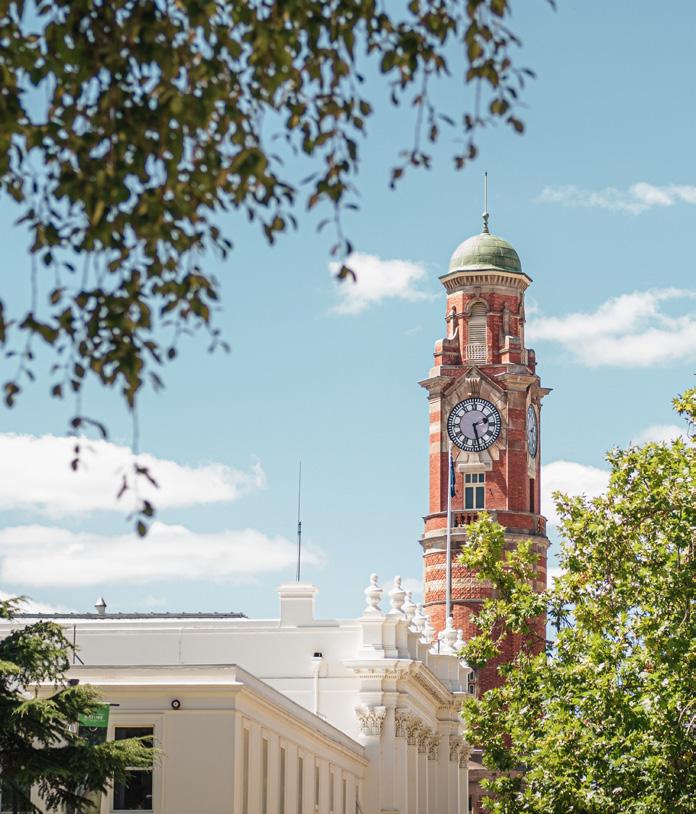
house values to $535,000 in the year to June 30, 2024139. Median apartment values performed better with a 2.3% rise to $440,000140. The silver lining of course will be for buyers, and particularly new entrants into the market, who can now nab a bargain in Launie (as the locals call it).
Launceston may be the state’s second largest city in terms of population, but it’s the city’s growing cultural and gastronomic presence which is really lifting its profile.

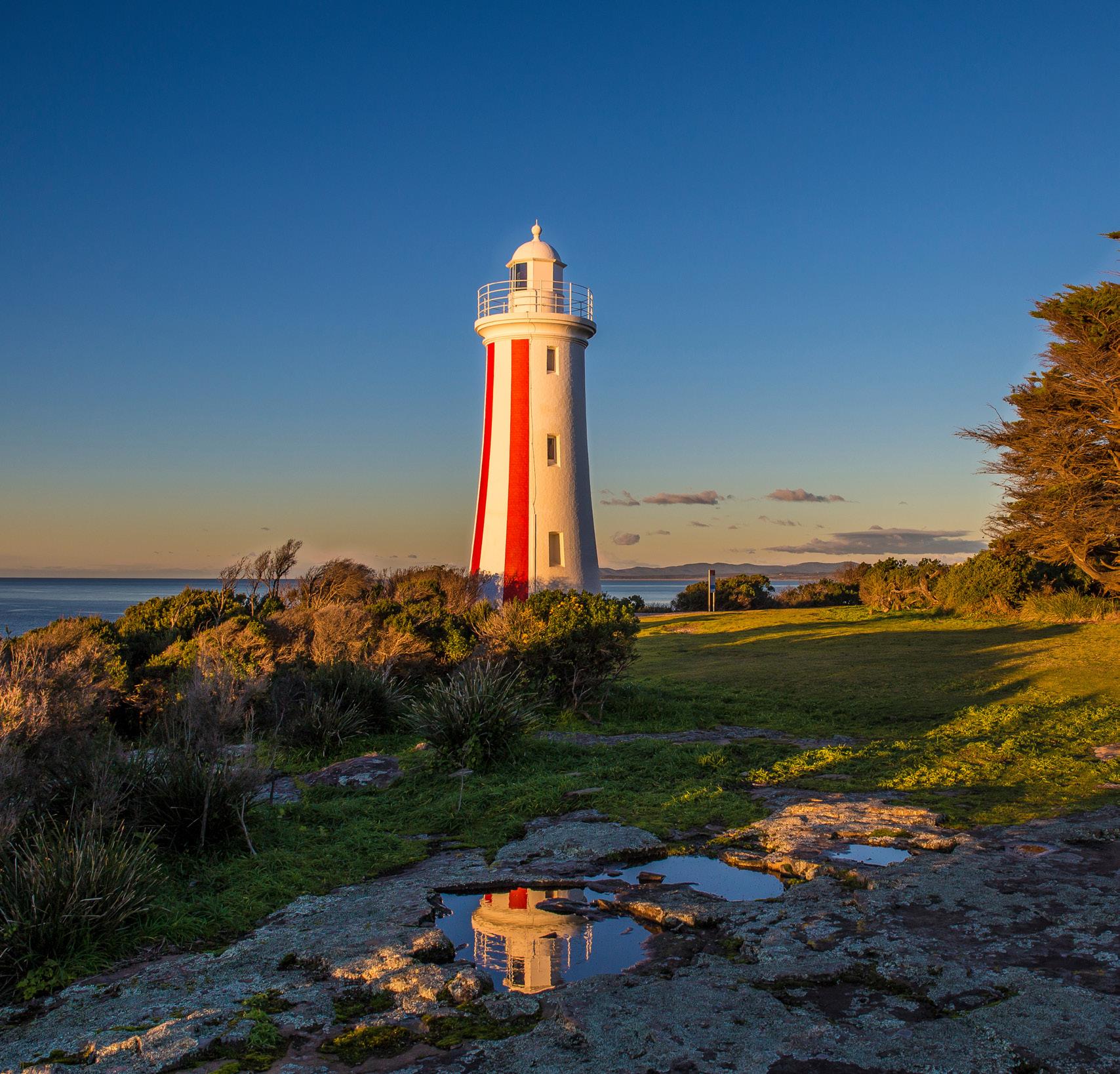
On the state’s north coast, Devonport is bracing itself for a development boom. A $240 million upgrade to the city’s port will see a 40% increase in freight capacity and 72,000 additional visitors each year by 2031141 . This commitment will cement Devonport’s reputation as a gateway into the state and boost the region’s economic prospects, making it a more desirable place in which to live and invest.
On the state’s north coast, Devonport is bracing itself for a development boom.
Couple this with some of the most affordable home values in the state and the prospects for the city look promising. Median house values held steady at $485,000 in the year to June 30, 2024, while apartment values held on at $386,250142 .
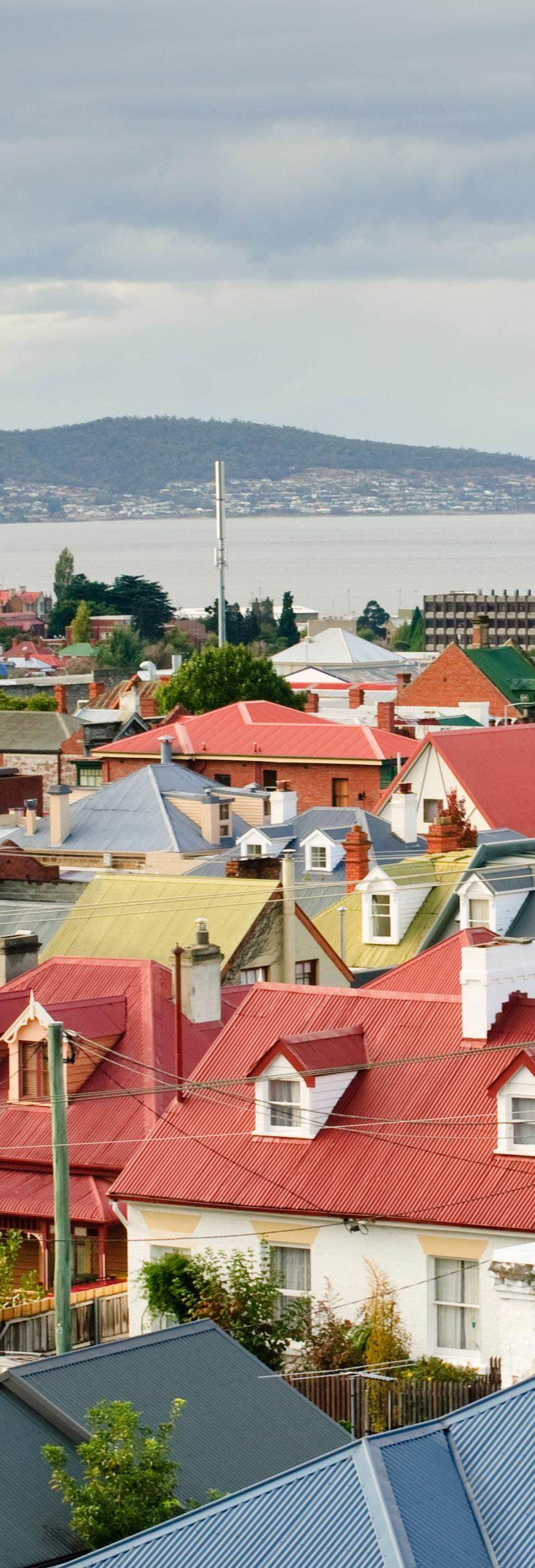
Famous for its beach, this suburb’s location at the gateway to the Southern Outlet motorway means its residents can reach the city centre in just 10 minutes. With a huge amount of land still available for development and talk that it could be the location of a performance centre for Tasmania’s new AFL club, Kingston is an area primed for growth.
Cool and vibrant, North Hobart attracts a hip crowd thanks to its nightlife and trendy eateries. The predominantly older-style housing stock has been injected with new life recently thanks to luxe developments like The Rox which will lift the suburb’s profile and potentially edge it closer and closer to a $1 million median value144
A tiny seaside hamlet located midway between Hobart and Port Arthur, Primrose Sands has historically been best known for its affordable housing. It’s now emerging as a gentrifier hotspot with some new private apartment developments lodged with Sorrell Council. Known for its beautiful beach, the median home value of $500,000 is predicted to take off in coming years145
Although considered to be on the outskirts of Launceston, this quaint semi-rural hub is in fact only a short 15 minute drive into the centre of town, making it perfect for those who want to feel a little removed from the bustle. What’s more, completion of the 350-place Legana Primary School at the start of the 2025 school year will be sure to attract young families to the suburb.
Plenty of land releases and development in the past decade make this semirural pocket outside of Devonport a neighborhood to watch. And if the 9.6% jump in median house prices continue, it could prove a happy investment, particularly for first home buyers who will rejoice at the $581,000 median house value143


Trend 01 - The Calm Home - Serene, Smart & Safe
1. Linking Geopolitics to the Macroeconomy, National Institute of Economic and Social Research, published January 22, 2024
2. Embrace the Warmth, Pantone®, published December 7, 2023
3. The Future of Interior Design: Trend Report for 2025, Belysse, published May 30, 2024
4. Rammed earth, YourHome website, Federal Government
5. Pioneering Sustainability: Australian Construction Embraces Sustainable Materials and Techniques, Wunderbuild, published February 16, 2024
6. Emailed responses from Adam Haddow, Director, SJB, July 10, 2024
7. Over 4.3 million Australian plan to buy a new vehicle in the next four years, Roy Morgan, published April 9, 2024
8. Charging your EV in your apartment, NRMA, published March 20, 2024
9. State of Commerce, Inside Australian Online Shopping 2024, eCommerce Industry Report, Australia Post, published March 27, 2024
10. Home Burglary Survey and Statistics 2024, Budget Direct, published April 10, 2024
11. State of Commerce, Inside Australian Online Shopping 2024, eCommerce Industry Report, Australia Post, published March 27, 2024
12. Future of eCommerce, Inside Australian Online Shopping 2024, eCommerce Industry Report, Australia Post, published March 27, 2024
13. Parcel Lockers for Residential Buildings, My Parcel Locker, published April 21, 2023
14. A new way to stop your food delivery order getting cold – or pinched, The Age, published September 18, 2023
15. Waldorf Astoria New York teases 2025 opening with luxury condo announcement, BusinessClass.com, published July 14, 2023
Trend 02 - Allure of the Coastal Azure
16. Australia’s Coasts and Estuaries, Federal Government, Geoscience Australia, updated April 29, 2021
17. Regional Movers Index, March 2024 Quarter Report, Regional Australia Institute, Commonwealth Bank, published May 31, 2024
18. Regional Movers Index, March 2024 Quarter Report, Regional Australia Institute, Commonwealth Bank, published May 31, 2024
19. Australia’s most in-demand regional coastal locations, PropTrack, published June 12, 2024
20. MuveRank 2023, Muval, published April 29, 2024
21. Coastal suburbs have an ocean frontage and are located along the Australian coastline
22. A third of Australia’s regional beachside markets maintain peak values amid economic challenges, CoreLogic, published January 25, 2024
23. Data provided by Tim Lawless, VP, Research Director Asia Pacific, CoreLogic, July 9, 2024
24. Data provided by Tim Lawless, VP, Research Director Asia Pacific, CoreLogic, July 9, 2024
25. Data provided by Tim Lawless, VP, Research Director Asia Pacific, CoreLogic, July 9, 2024
26. Hedonic Home Value Index, June Results, CoreLogic, published July 1, 2024
27. Data provided by Tim Lawless, VP, Research Director Asia Pacific, CoreLogic, July 9, 2024
28. Waterfront Homes, Knight Frank, Edition 2 – 2024, published July 2024 (this report did not include Sydney, Melbourne and Brisbane March 2024 data which is separately held by McGrath)
29. Data provided by McGrath Research, July 31, 2024
30. Waterfront Homes, Edition 2 – 2024, Knight Frank, published July 2024
31. Data provided by McGrath Research, July 31, 2024
32. Waterfront Homes, Edition 2 – 2024, Knight Frank, published July 2024
Trend 03 - Our Changing Cities... Housing Redefined
33. Coming home: 662,000 Australian household reunite with adult children, Finder, published October 20, 2023
34. Pathways to home ownership in an age of uncertainty, Australian Housing and Urban Research Institute, published March 21, 2023, page 31
35. Housing Affordability Report, ANZ and CoreLogic, published November 2023
36. Why $800,000 homes are in hot demand, Australian Financial Review, published May 8, 2024
37. Helia spotlight: Home buyer sentiment survey, Helia, published July 2024
38. The Household, Income and Labour Dynamics in Australia (HILDA) Survey, Melbourne Institute, published February 2024, page 21
39. Retirement worries pile up for “sandwiched” Generation X, The Australian, published June 19, 2024
40. Thriving Suburbs Program, Federal Government, published July 27, 2024
41. Urban Precincts and Partnerships Program, Federal Government, published May 23, 2023
42. Granny flats: Where are the greatest opportunities for development, CoreLogic, Archistar & Blackfort, published October 2023
43. For government policy on this matter, look to Fairer housing targets announced with incentives to councils to build better communities for NSW, NSW Government media release, 29 May 2024, Statewide draft housing targets webpage, Victorian Department of Transport and Planning and Build More Homes Faster webpage, Queensland Government.
44. State of the Land: 2024, Urban Development Institute of Australia, published March 2024
45. State of the Land: 2024, Urban Development Institute of Australia, published March 2024
46. Diverse and Well-located homes program webpage, NSW Department of Planning, Housing and Infrastructure
47. Future Homes program, Victorian Department of Transport and Planning,
48. 2011 Census, Australian Bureau of Statistics, published 2012; compared to, 2021 Census, Australian Bureau of Statistics, published 2022.
49. Defined as a building eight storeys or more
50. Inner-city considered to be within 10km from the GPO in Sydney and Melbourne and within 5km from Brisbane, middle ring considered to be within 10-25km of GPO in Sydney, 10-20km in Melbourne and 5-20km in Brisbane
51. Proposed towers referring to towers proposed but not completed as of 1 July 2024
52. Data provided by McGrath Research, July 31, 2024
53. State of the Land: 2024, Urban Development Institute of Australia, published March 2024
54. Hedonic Home Values Index, June Results, CoreLogic, July 2024
55. The suburbs where unit values are on the cusp of a new high, Australian Financial Review, published June 17, 2024
56. Residential construction costs rising at the slowest annual pace in over 20 years, CoreLogic, published July 11, 2024
57. Delivering the National Housing Accord, Federal Government, updated August 16, 2023
Trend 04 - Baby Boomers Making Their Move
58. “Back in my day” – comparing millennials with earlier generations, Australian Bureau of Statistics, published October 20, 2022
59. Grandparent economy, McCrindle, published May 13, 2024
60. Millennials and the quest for the great Australian dream, McCrindle, published March 3, 2020
61. Older Australians and the housing aspirations gap, Australian Housing and Urban Research Institute, published August 7, 2019
62. Downsizer super contributions, Australian Taxation Office, published March 26, 2024
63. Older Australians, Australian Institute of Health and Welfare website, published July 2, 2024
64. Pensioners receive added incentive to downsize, Media release, Amanda Rishworth MP, published November 25, 2022
65. Boomers driving travel in ‘cost of living’ era, but are hotels getting the message?, Accom News, published February 2, 2024
66. Demand for ‘lock up and leave property’ rising, Property Reporter, published February 9, 2024
67. Older Australians and the housing aspirations gap, Australian Housing and Urban Research Institute, published August 7, 2019
68. Older Australians and the housing aspirations gap, Australian Housing and Urban Research Institute, published August 7, 2019
69. ‘Missing middle’ homes would benefit Boomers, Millennials, Australian Financial Review, published May 29, 2023
70. Effective downsizing options for older Australians, Australian Housing and Urban Research Institute, published February 12, 2020
71. How to profit as Baby Boomers downsize, Australian Financial Review, published May 1, 2023
72. 2023 PwC/Property Council Retirement Census, PricewaterhouseCoopers, published July 2, 2024
73. Effective downsizing options for older Australians, Australian Housing and Urban Research Institute, published February 12, 2020
74. Data provided by Tim Lawless, VP, Research Director Asia Pacific, CoreLogic, July 9, 2024
75. Effective downsizing options for older Australians, Australian Housing and Urban Research Institute, published February 12, 2020

76. “Escape from the city”: Small regional towns where retirees can save money and have a great lifestyle, Downsizing.com.au, published February 18, 2021
77. Data provided by Tim Lawless, VP, Research Director Asia Pacific, CoreLogic, July 9, 2024
78. Property prices climb in regions as buyers favour tree and sea change, The Sydney Morning Herald, published April 16, 2024
City Spotlights - Sydney & Surrounds
79. Hedonic Home Value Index, June Results, CoreLogic, published July 1, 2024
80. Mapping the Market, 12 month value change, houses and apartments, CoreLogic, published August 2024
81. Building approvals, NSW, dwelling units and private sector houses, seasonally adjusted, 12 months to June 2024, Australian Bureau of Statistics, published July 30, 2024
82. PEXA Cash Purchases Report, PEXA, published March 2024
83. Bank of Mum and Dad statistics 2023, Finder, published 2023
84. Monthly Housing Chart Pack, CoreLogic, published July 10, 2024
85. Regional Market Update, CoreLogic, published May 2024
86. 2023–24 State Infrastructure Plan, Infrastructure NSW, published November 2023
87. Transport Oriented Development – Accelerated Precincts, NSW Department of Planning, Housing and Infrastructure, published 2024
88. Low and Mid-Rise Reforms start to take effect, Media release, NSW Minister for Planning and Public Spaces, published June 29, 2024
89. Parramatta Light Rail Stage 1, NSW Government, published 2024
City Spotlights - Canberra
90. Hedonic Home Value Index, June Results, CoreLogic, published July 1, 2024
91. Month in Review, March 2024, Herron Todd White, published April 2024
92. Monthly Housing Chart Pack, CoreLogic, published July 10, 2024, pages 32 and 33
93. Rent growth picked up in the start of 2024, taking rents to new record highs, CoreLogic, published May 6, 2024
94. More housing supply for Canberra, Media Release, ACT Government, published September 11, 2023
95. Budget delivers significant stamp duty cuts, Media Release, ACT Government, published June 24, 2024
City Spotlights - Melbourne & Surrounds
96. Hedonic Home Value Index, June Results, CoreLogic, published July 1, 2024
97. State Budget 2023/24 Budget Announcement, Victorian State Revenue Office, updated 19 August 2024
98. The Multi-Speed Market, CoreLogic, published June 2024
99. Monthly Housing Chart Pack, CoreLogic, published June 12, 2024
100. National State and Territory Population, Australian Bureau of Statistics, published June 13, 2024
101. Hedonic Home Value Index, June Results, CoreLogic, published July 1, 2024
102. The Multi-Speed Market, CoreLogic, published June 2024
103. Apply for a first home buyer reduction, State Revenue Office Victoria
104. The Multi-Speed Market, CoreLogic, published June 2024
105. Statement on Monetary Policy, Reserve Bank of Australia, published August 6, 2024
106. Victoria in Future 2023, Department of Transport and Planning, published September 2023
107. Projects, Victoria’s Big Build, Victorian Government, last updated December 14, 2023
108. The Global Liveability Index 2024, Economist Intelligence, published July 2024
Top Picks - Melbourne & Surrounds
109. Market Trends, 12 months to June 30, 2024, Corelogic, published September 10, 2024
110. Market Trends, 12 months to June 30, 2024, Corelogic, published September 10, 2024
111. Market Trends, 12 months to June 30, 2024, Corelogic, published September 10, 2024
City Spotlights - Brisbane & Surrounds
112. Hedonic Home Value Index, May Results, CoreLogic, published June 3, 2024
113. For these purposes, the start of COVID-19 is defined as March 2020
114. Hedonic Home Value Index, June Results, CoreLogic, published July 1, 2024
115. Regional Population, Australian Bureau of Statistics, published March 26, 2024 (figures refer to Greater Brisbane which includes the Brisbane City Council area and surrounding areas, but excludes the Gold Coast and Sunshine Coast)
116. New direction for Brisbane 2032 Olympic and Paralympic Games sports venues has community sport at its heart, Queensland Government, published March 18, 2024
117. Brisbane Metro Construction Updates, Brisbane City Council, published June 2024
118. Transforming Travel, Cross River Rail Delivery Authority website
119. Direct Sunshine Coast Rail Line, Queensland Government: Department of Transport and Main Roads
120. Home Guarantees Scheme Trends and Insights Report 2022-2023, National Housing Finance and Investment Corporation
121. Cost of living for Queensland home buyers, Media statement by Premier, Deputy Premier and Minister for Housing, Local Government and Planning, published 9 June 2024
122. Queensland rental data, FY24, CoreLogic
123. Hedonic Home Value Index, June Results, CoreLogic, published July 1, 2024
124. Regional Population, Australian Bureau of Statistics, published March 26, 2024
125. Discover Aura, Stockland website
City Spotlights - North Queensland
126. Hedonic Home Value Index, June Results, CoreLogic, published July 1, 2024
127. Queensland rental data, FY24, CoreLogic
Top Picks - Brisbane & Surrounds
128. Queensland rental data, FY24, CoreLogic
City Spotlights - Hobart & Surrounds
129. Hedonic Home Value Index, June Results, CoreLogic, published July 1, 2024
130. Hedonic Home Value Index, June Results, CoreLogic, published July 1, 2024
131. Monthly Housing Chart Pack, June 2024, CoreLogic, published July 1, 2024
132. Hedonic Home Value Index, June Results, CoreLogic, published July 1, 2024
133. Stamp duty abolished for first home buyers, Media release, Premier of Tasmania Jeremy Rockliff, published July 3, 2024
134. Transport Services, Department of State Growth, Tasmanian Government
135. Macquarie Point Arts, Entertainment & Sporting Precinct, Strategic Business Case Summary, Tasmanian Government
136. National, State & Territory Population, December 2023, Australian Bureau of Statistics, published June 13, 2024
137. Labour Force Australia (6202.0), Table 9, Labour Force Status by Sex, Tasmania, Australian Bureau of Statistics, published June 13, 2024
138. UNESCO Creative Cities Network
City Spotlights - Launceston & Devonport
139. Market Trends, 12 months to June 30, 2024, CoreLogic, published September 2024
140. Market Trends, 12 months to June 30, 2024, CoreLogic, published September 2024
141. Devonport East Redevelopment, TasPorts
142. Market Trends, 12 months to June 30, 2024, CoreLogic, published September 2024
Top Picks - Hobart & Surrounds
143. Market Trends, 12 months to June 30, 2024, CoreLogic, published September 2024
144. Market Trends, 12 months to June 30, 2024, CoreLogic, published September 2024
145. Market Trends, 12 months to June 30, 2024, CoreLogic, published September 2024
Disclaimer: All information has been obtained from sources believed to be reliable. McGrath Limited and its subsidiaries, together with their directors, officers, employees and agents have used their best endeavours to ensure the information passed on in this report is accurate, however they have not checked this information and have no belief either way as to the accuracy of the information contained in this report. Any recommendations and forward looking statements are statements of opinion only, not guarantees of future performance, and should not be relied upon. You should make your own enquiries in relation to the information contained in this report. McGrath trademarks are property of McGrath Limited.